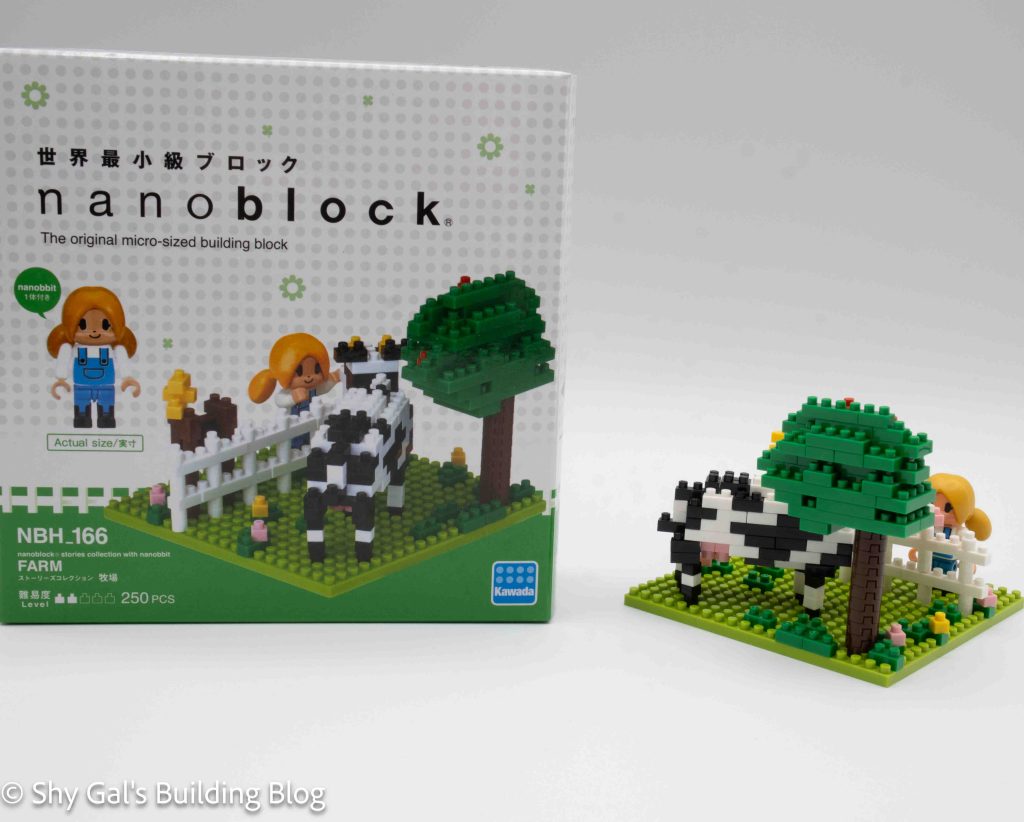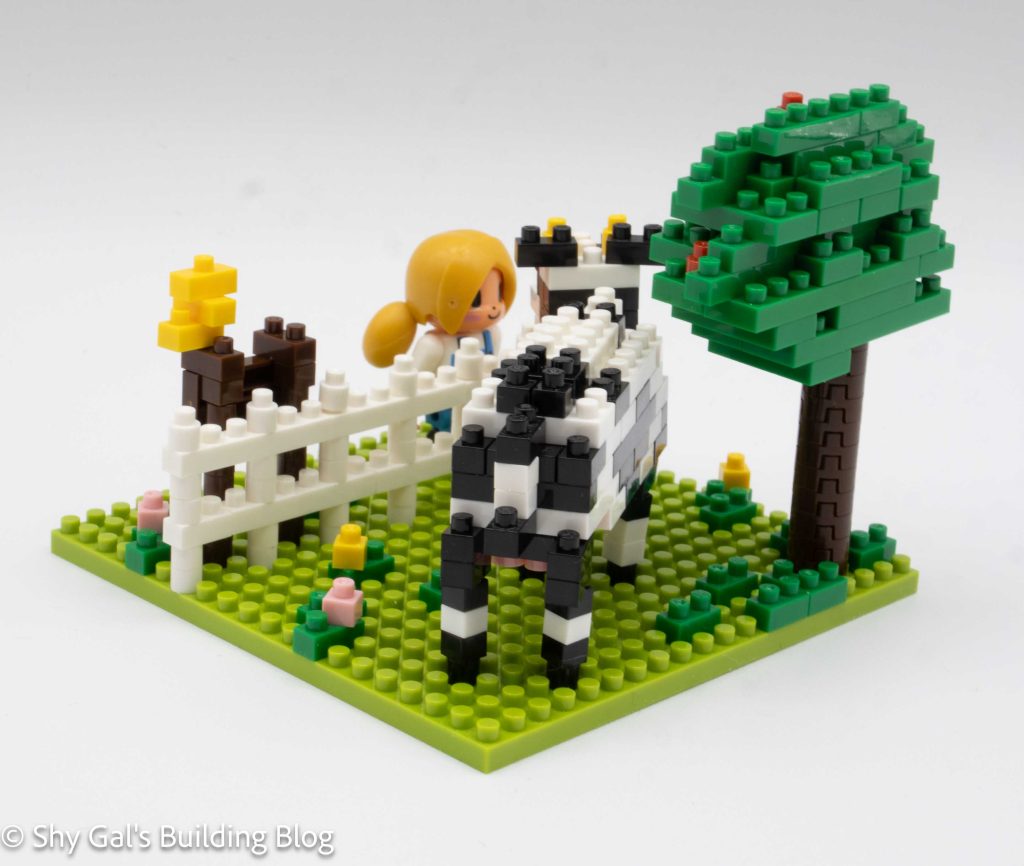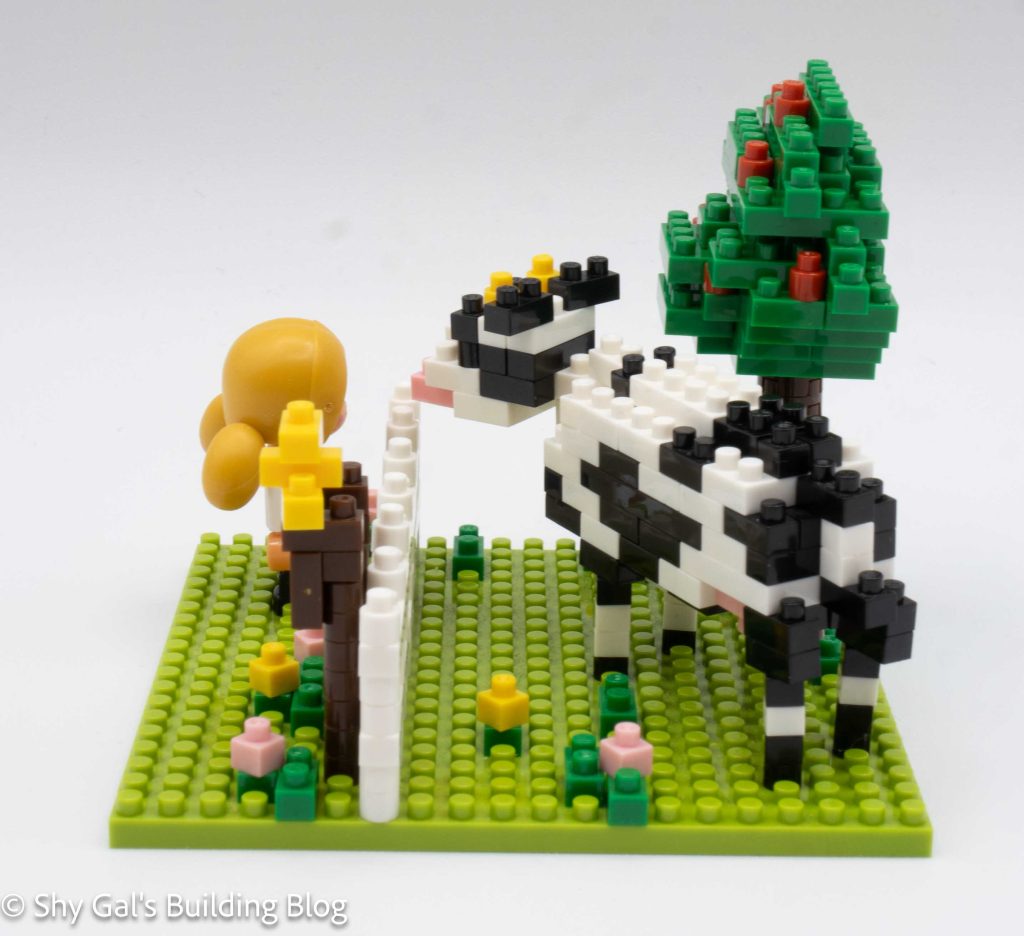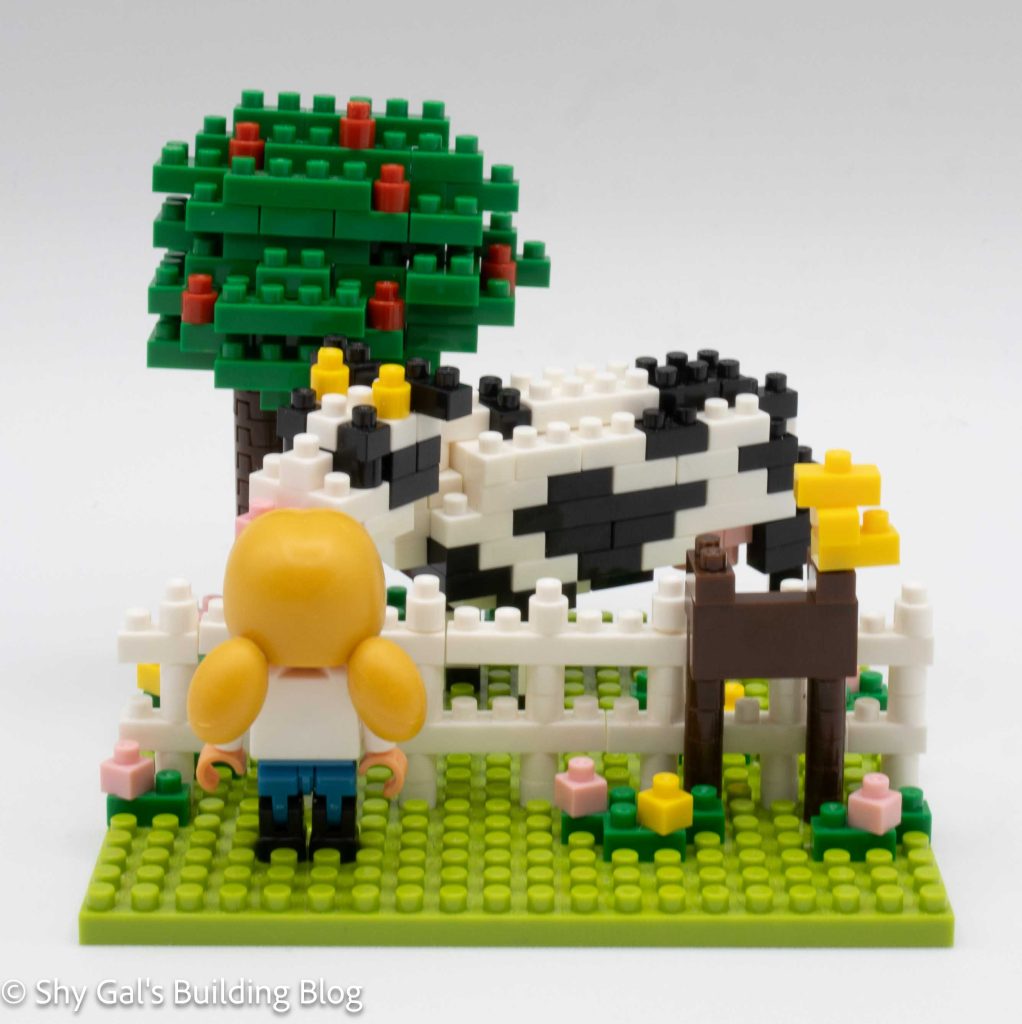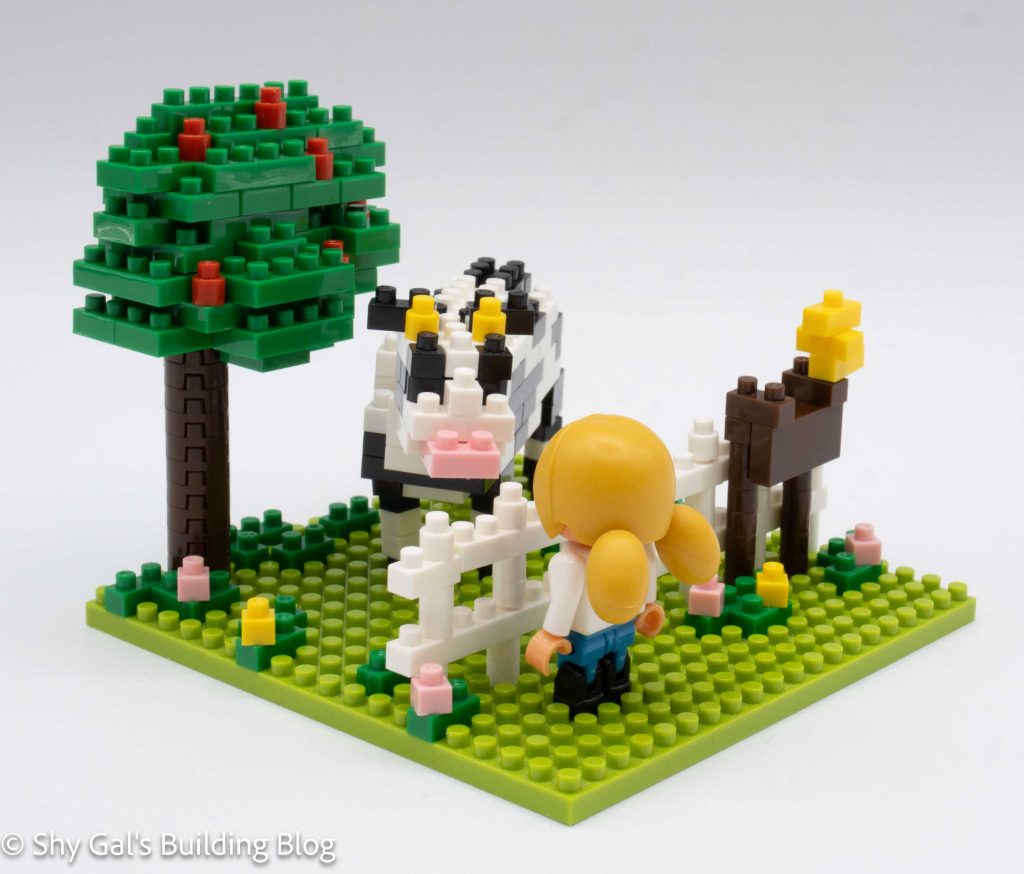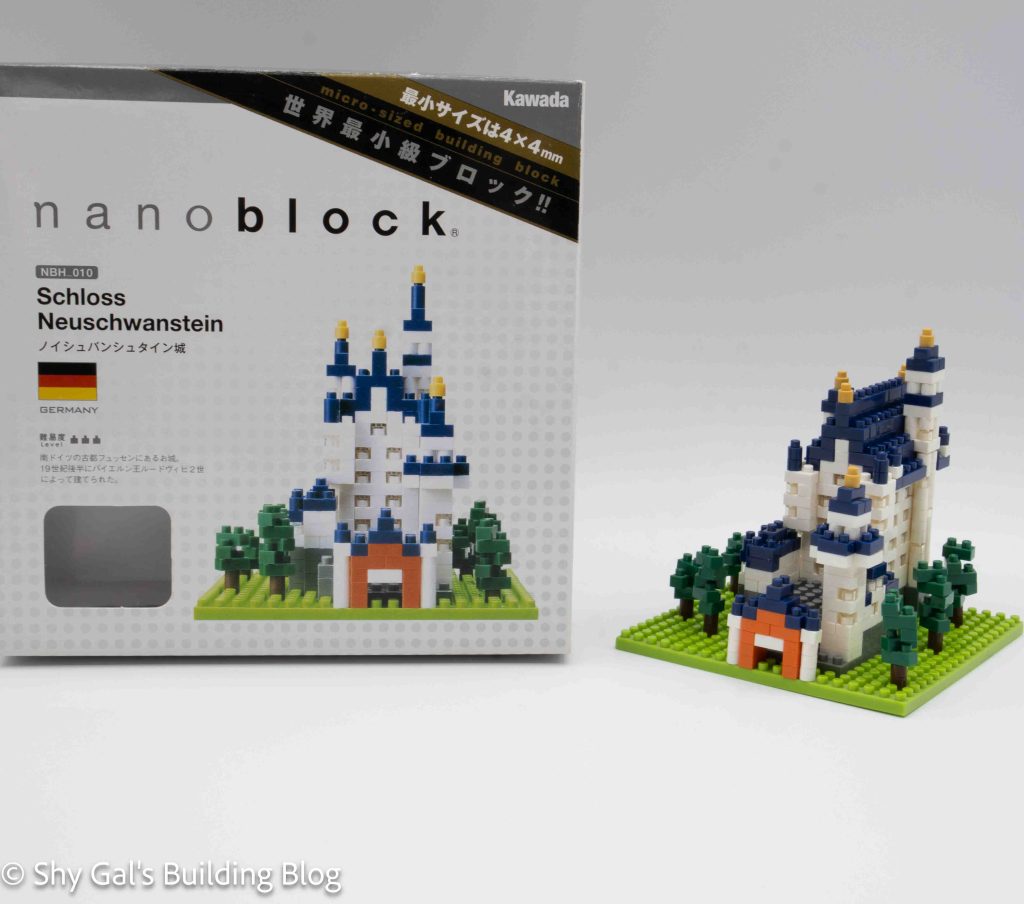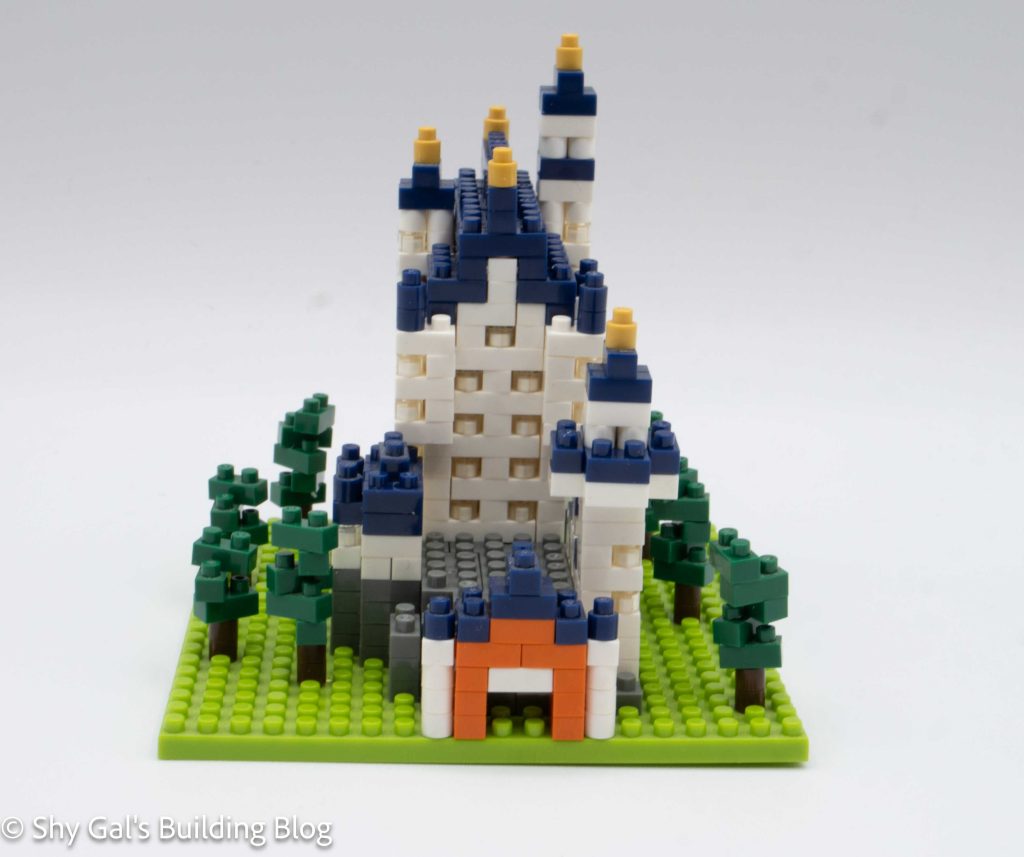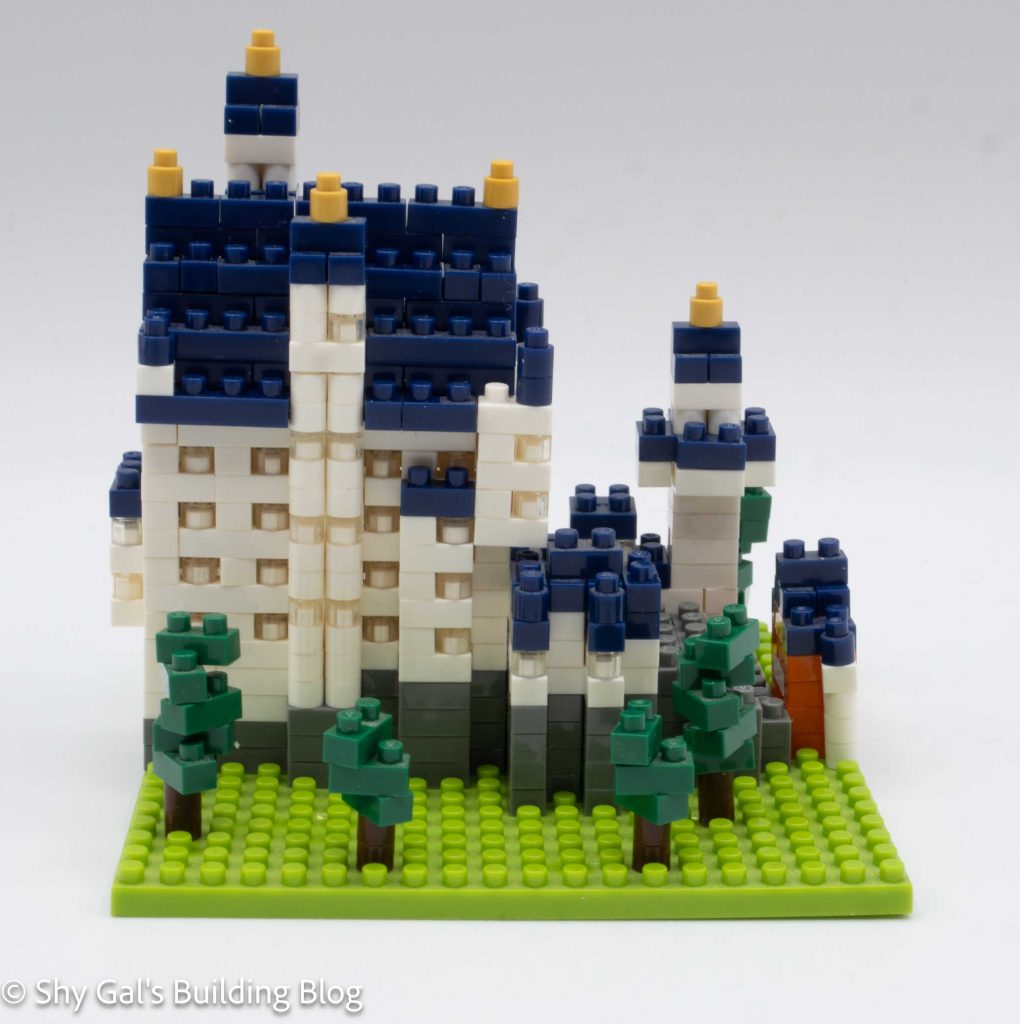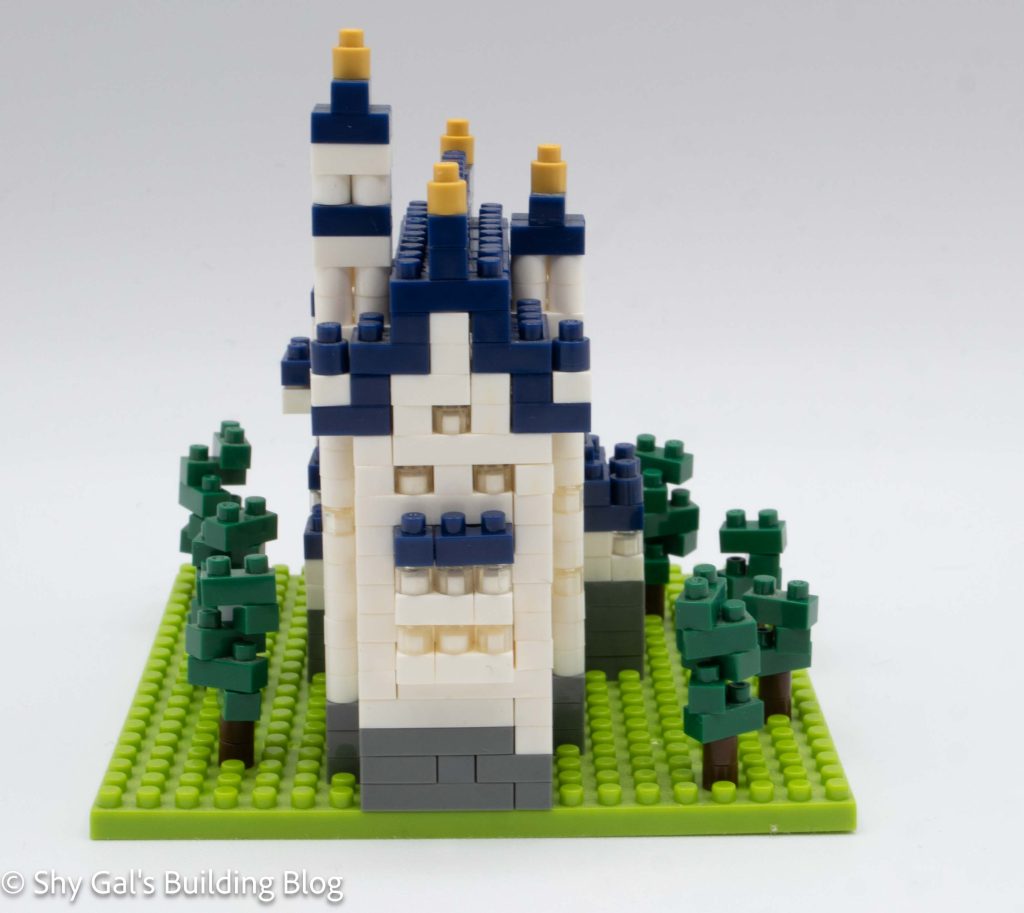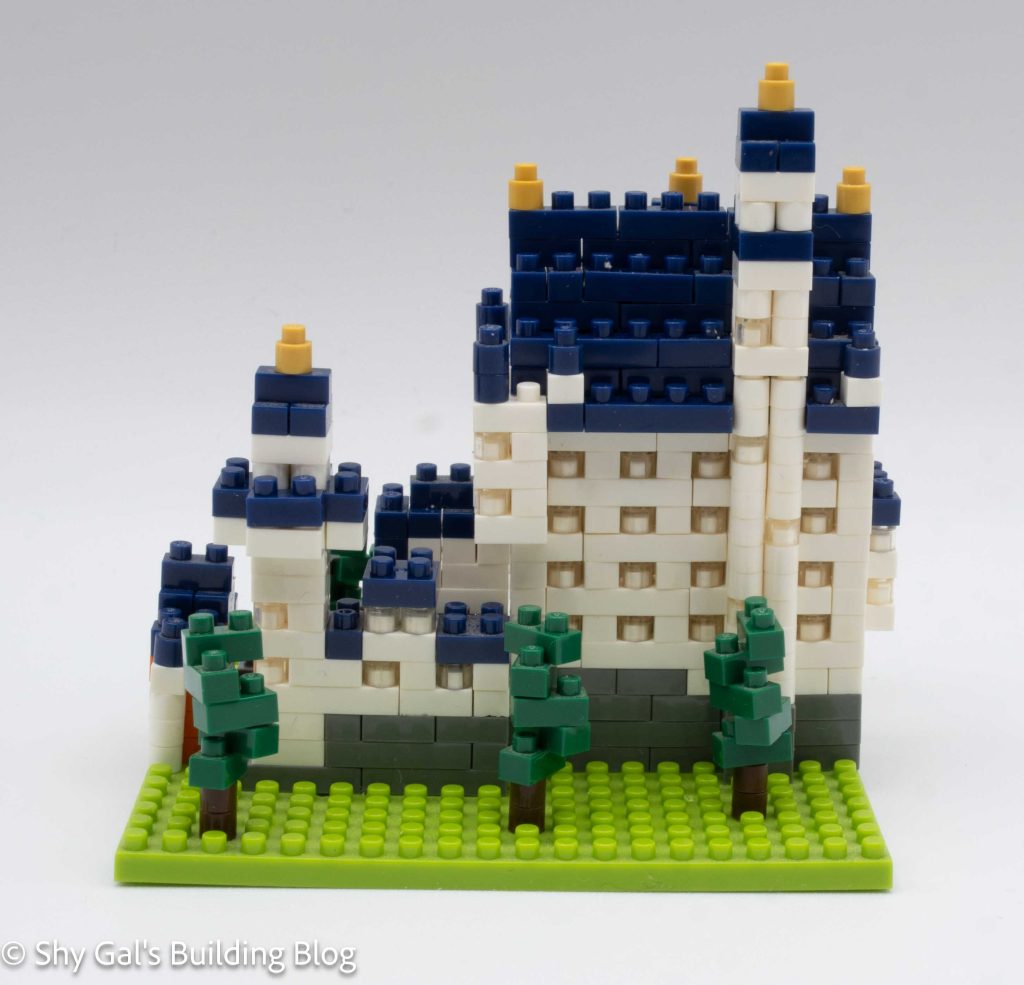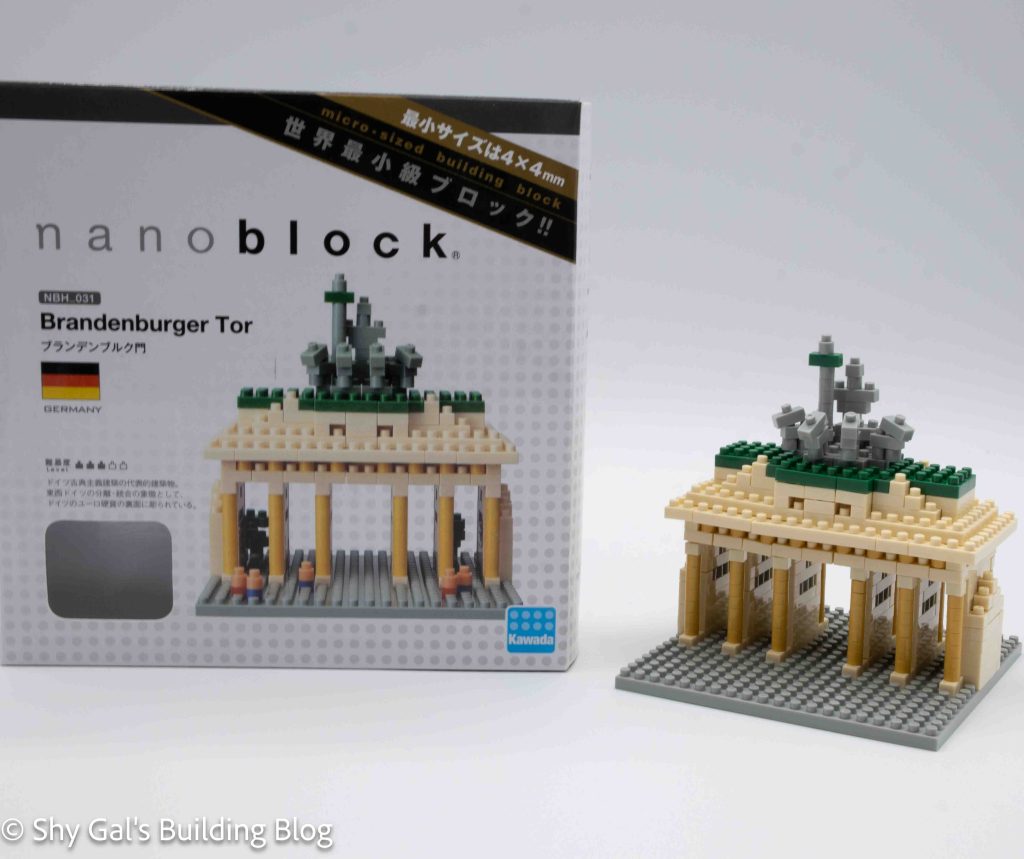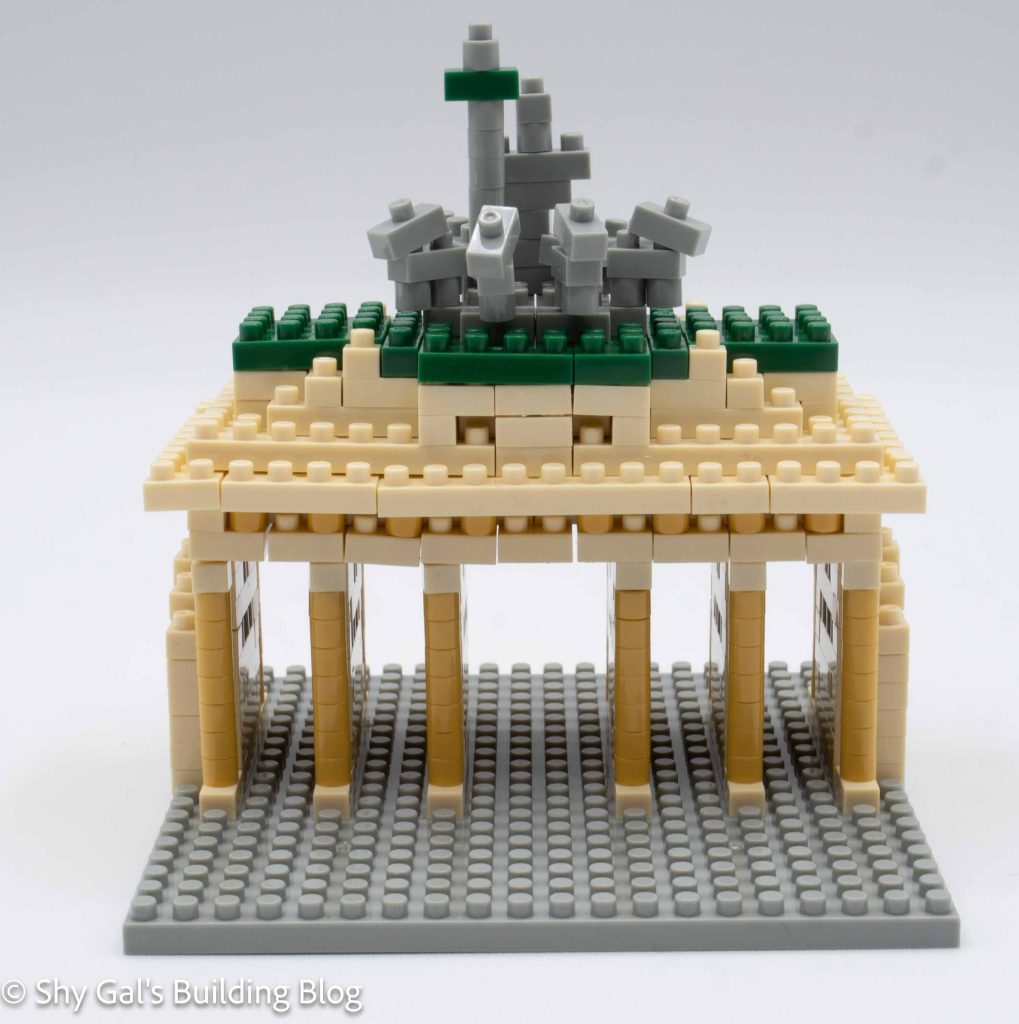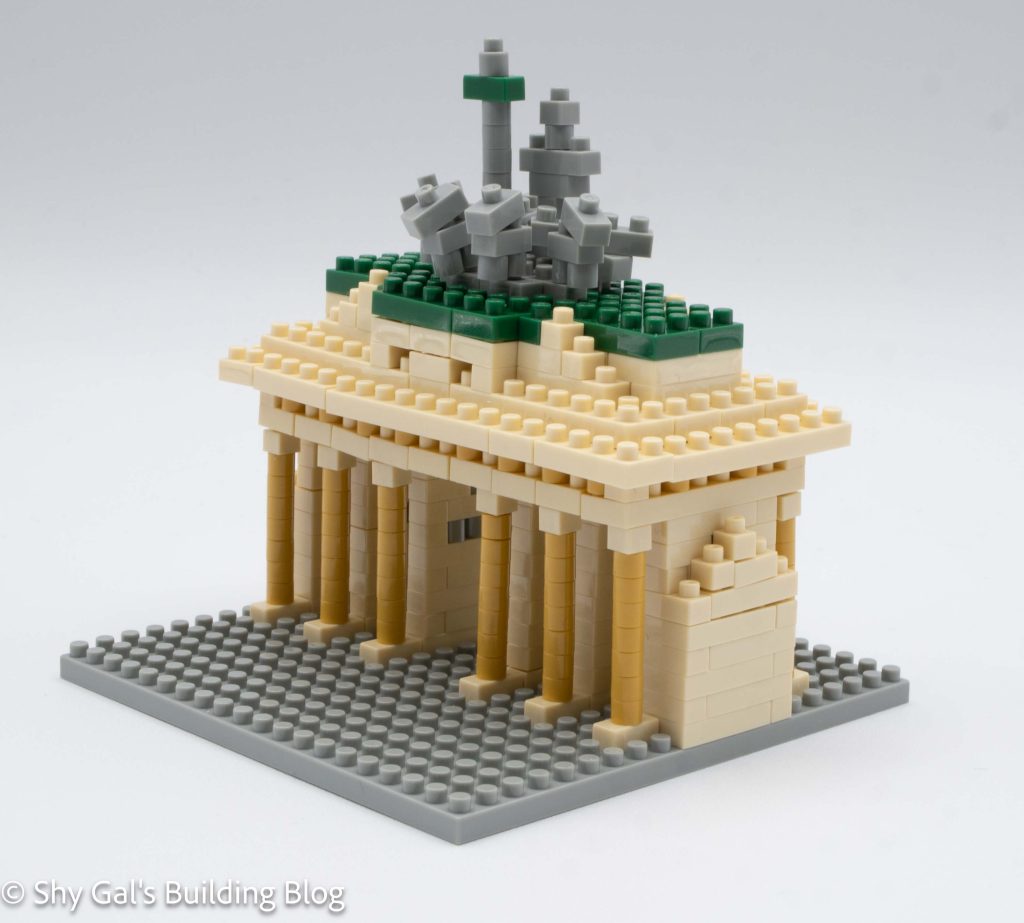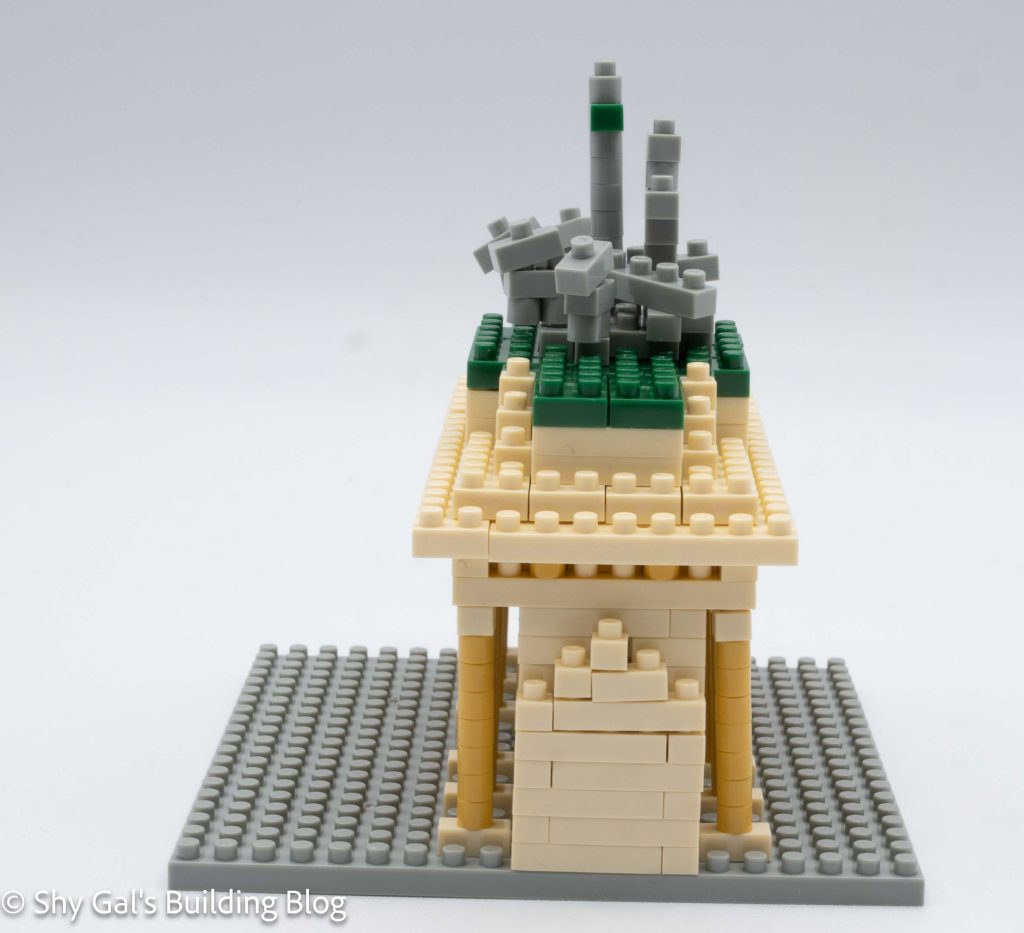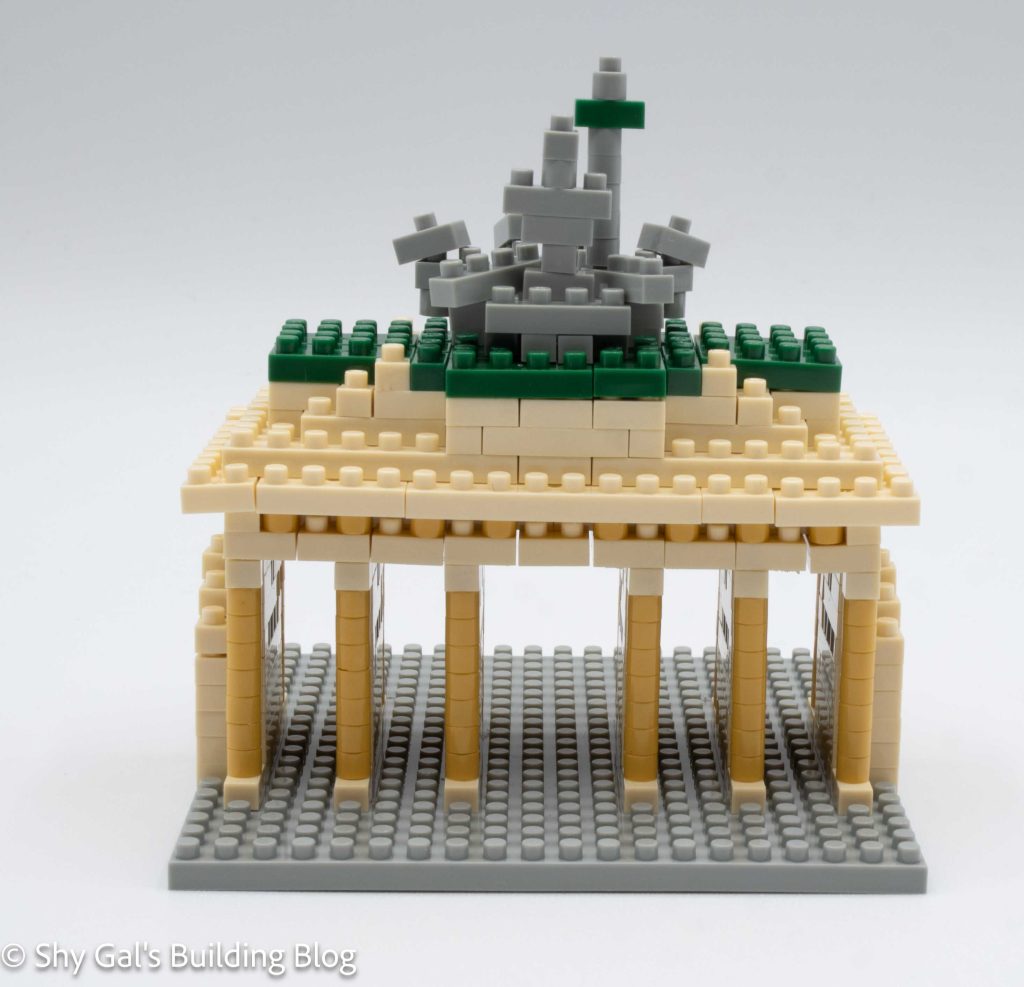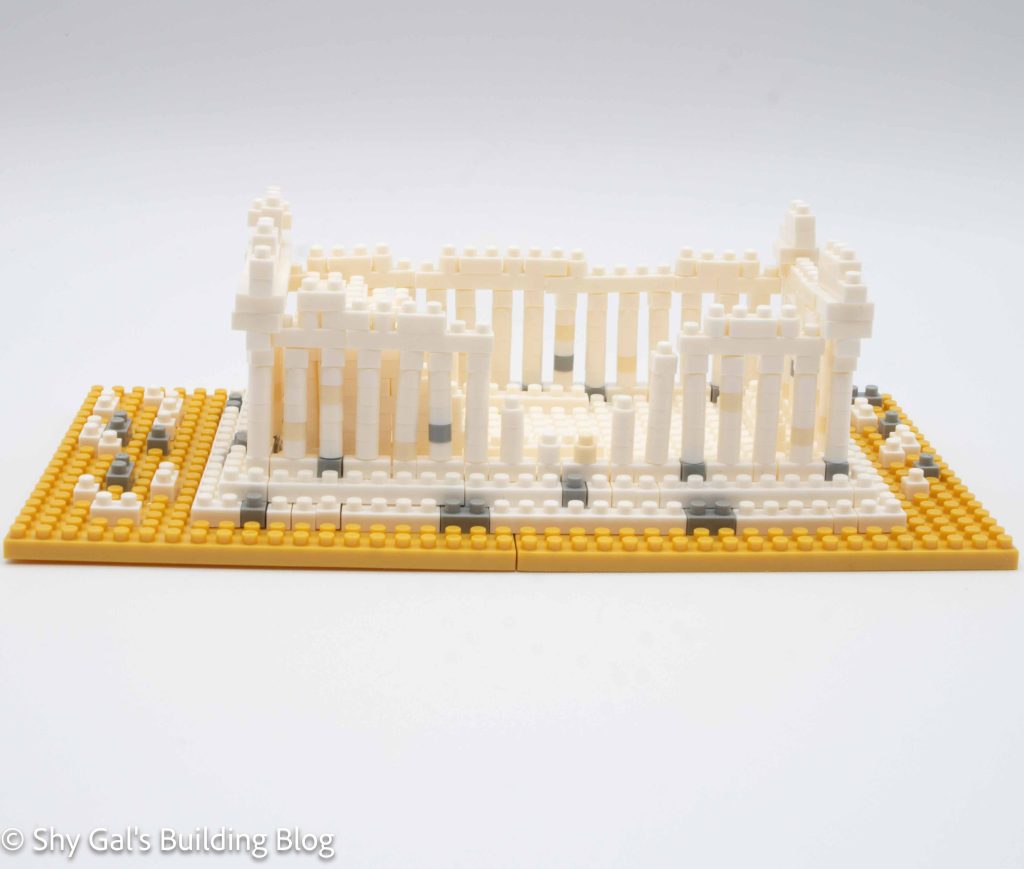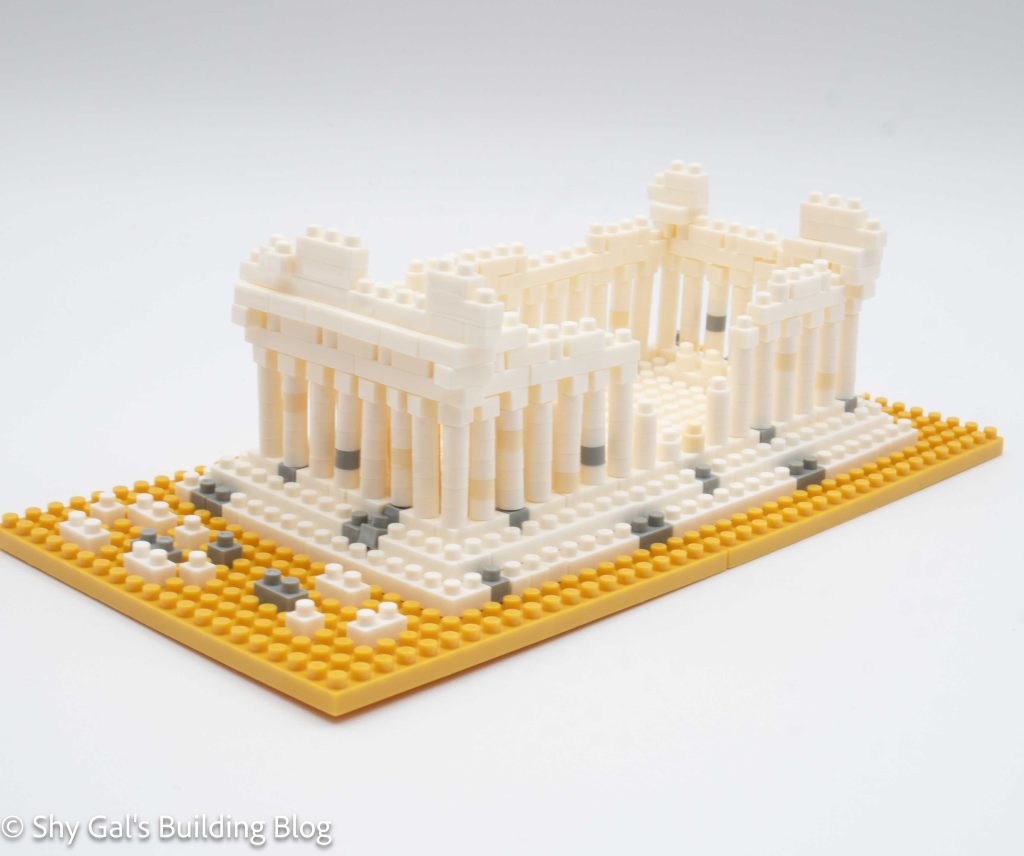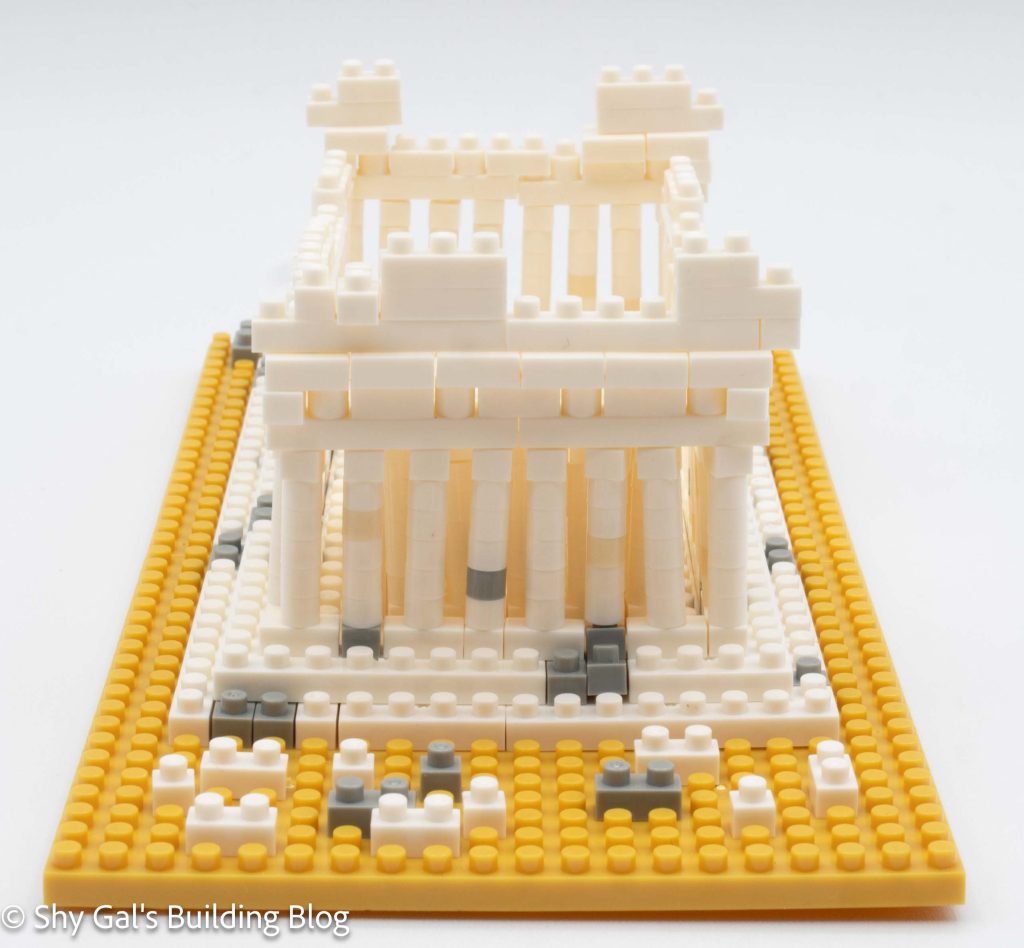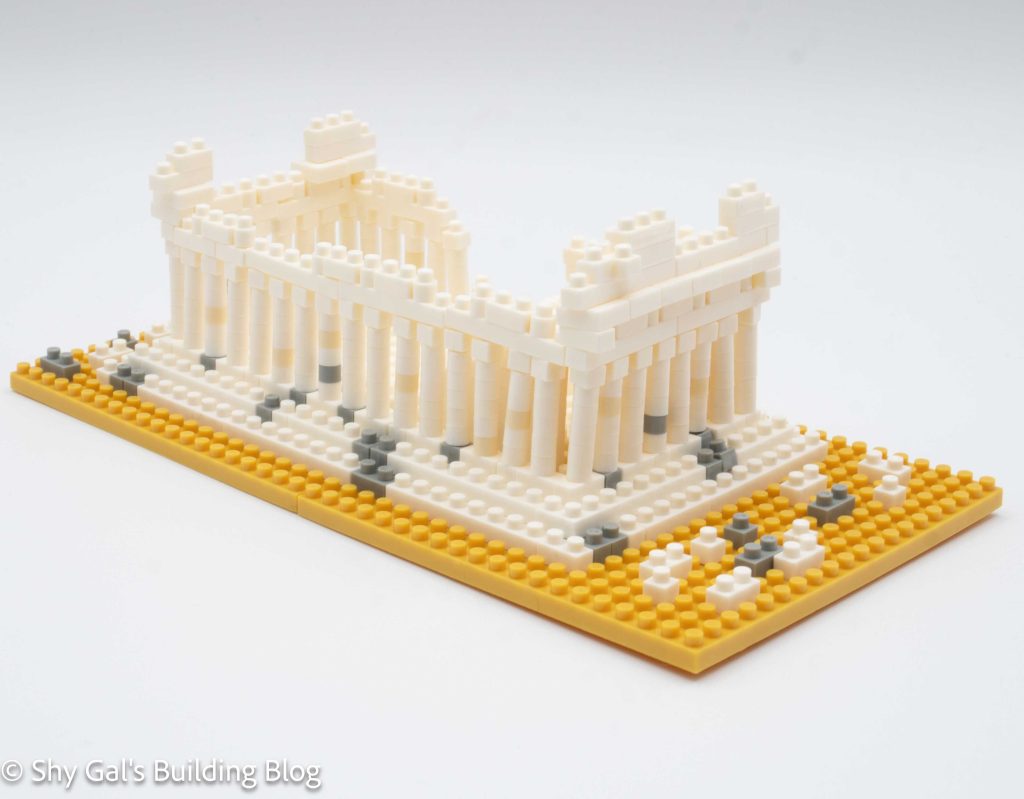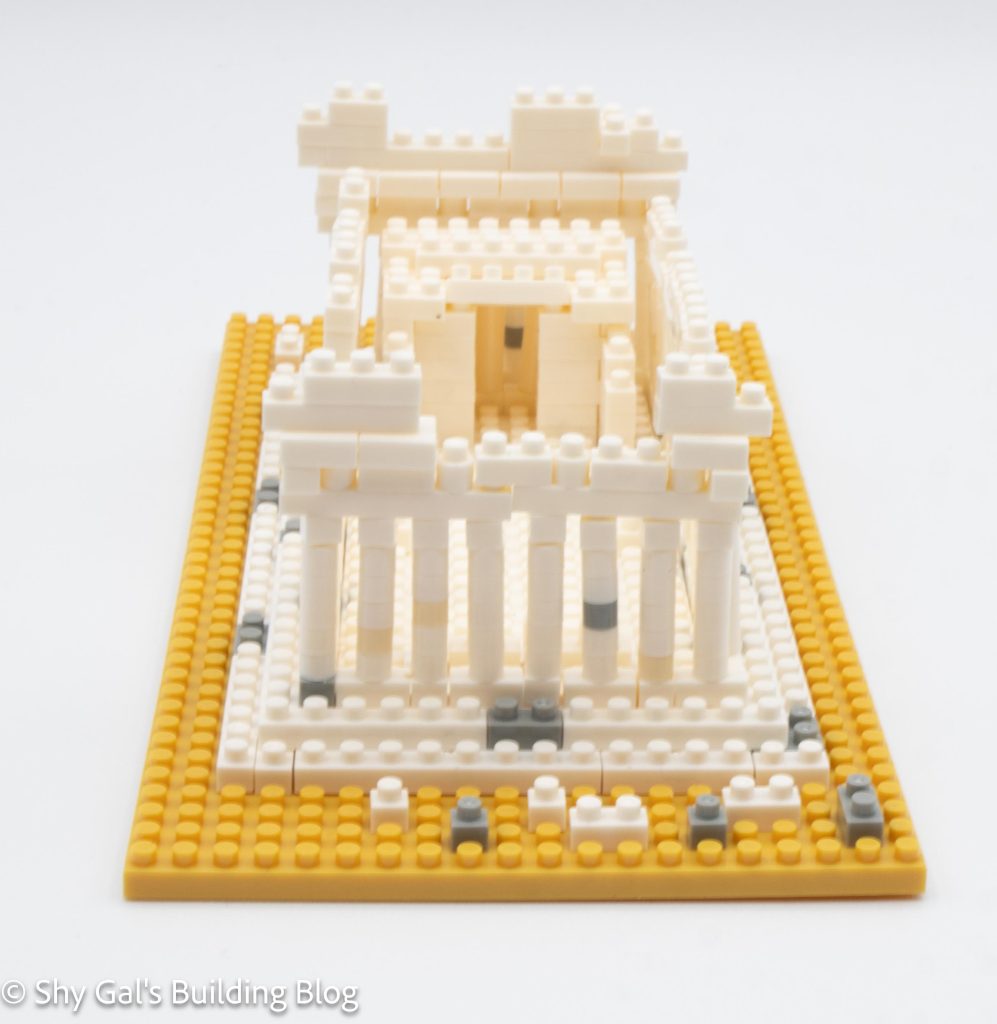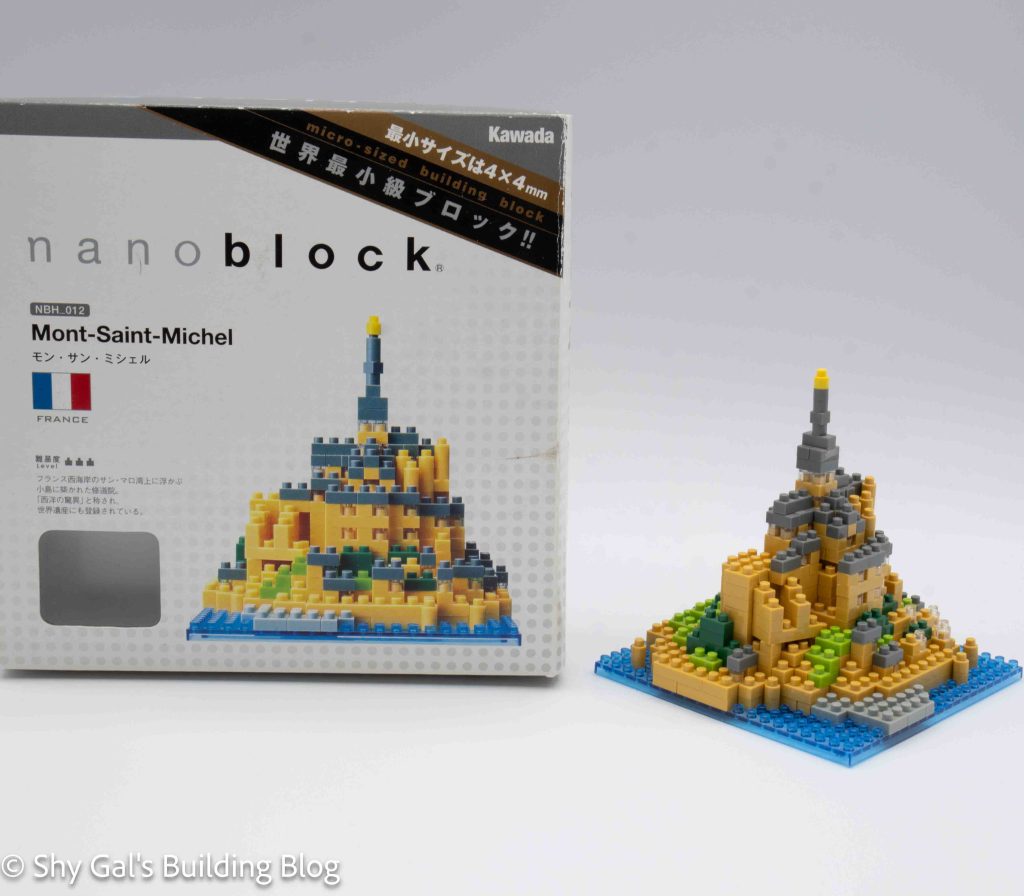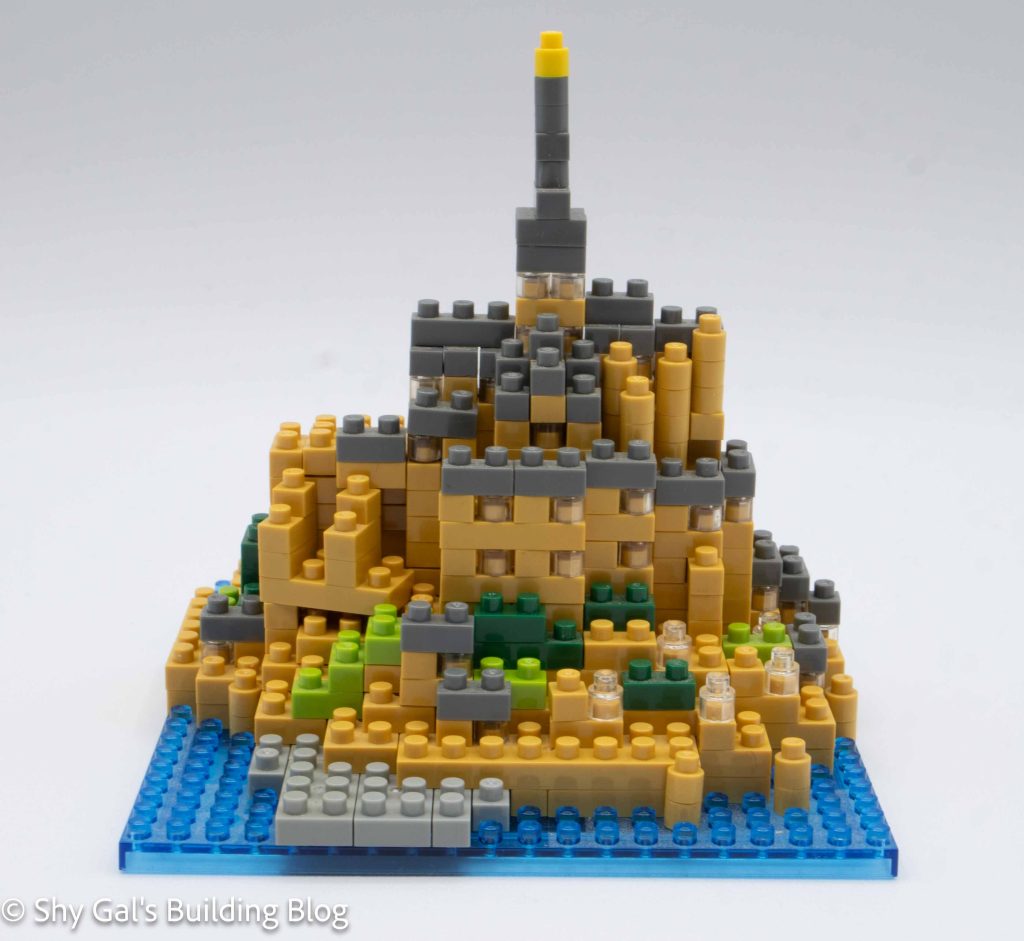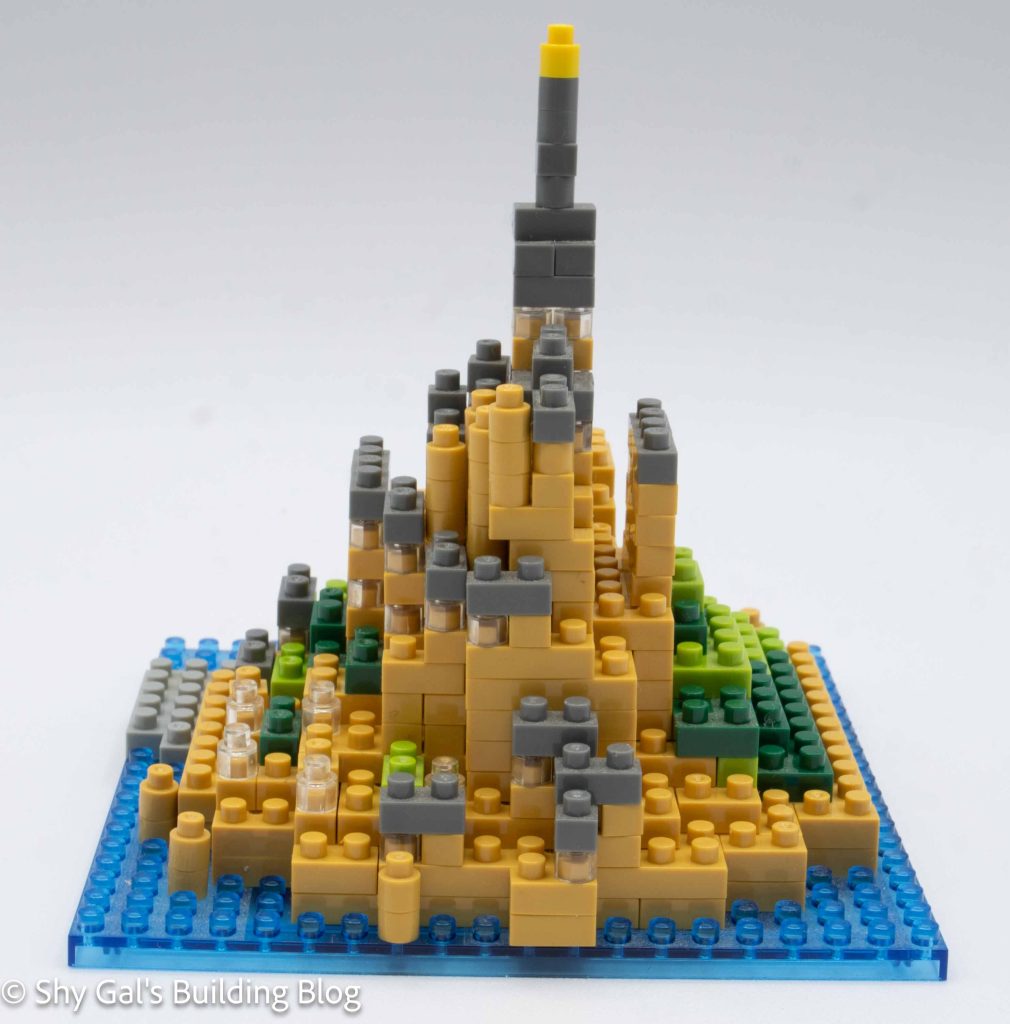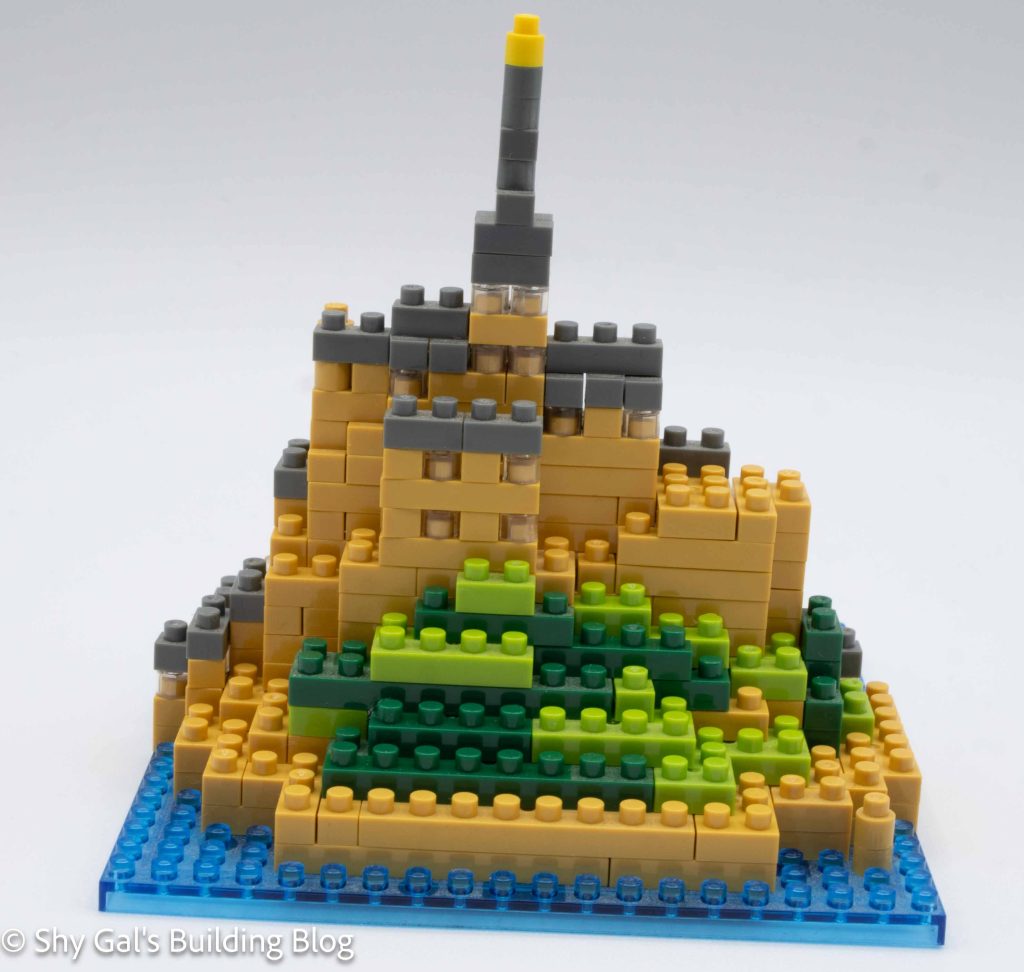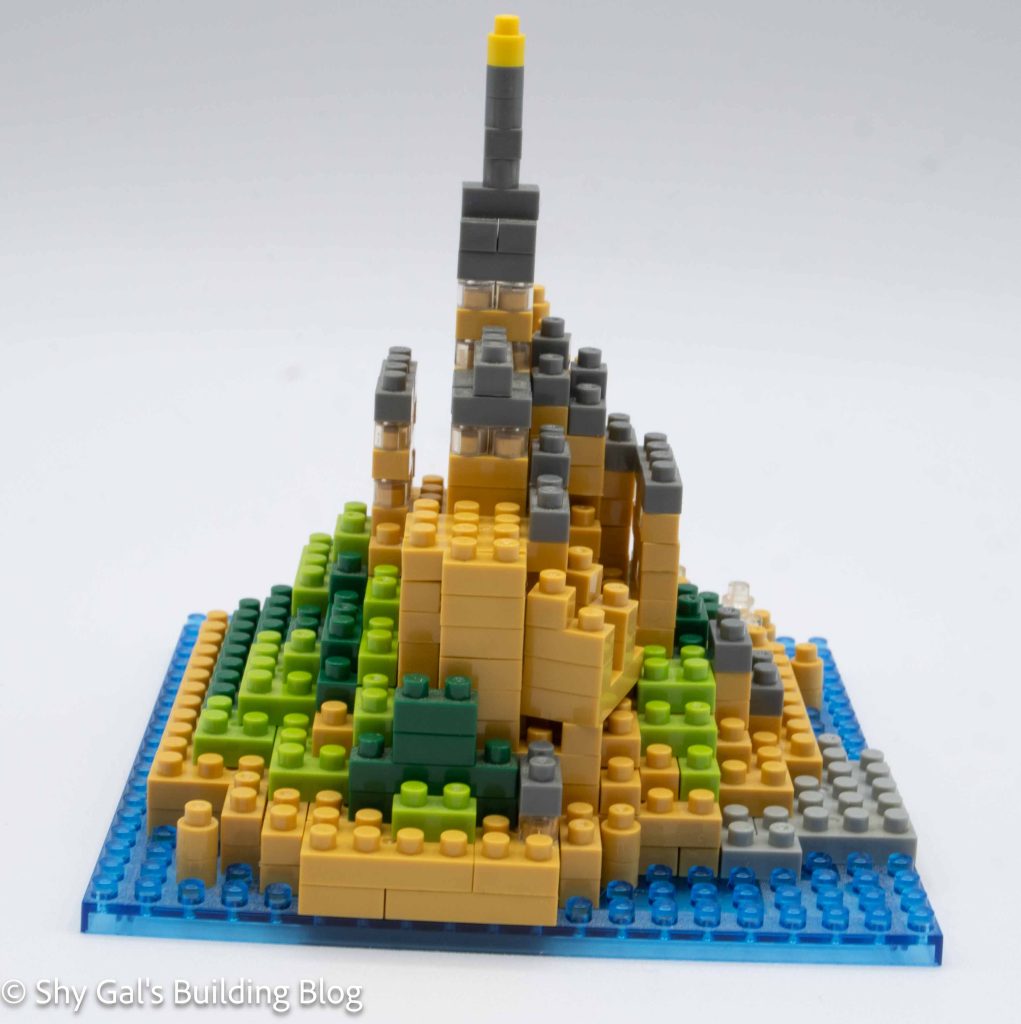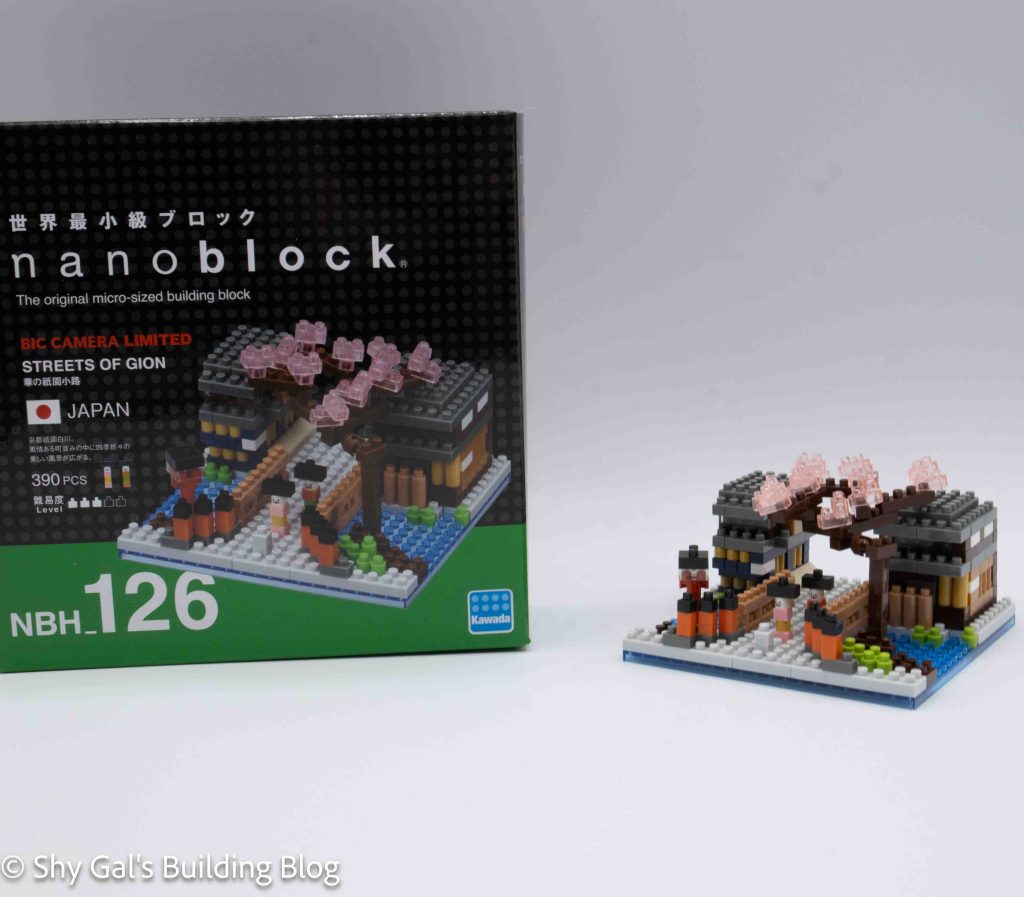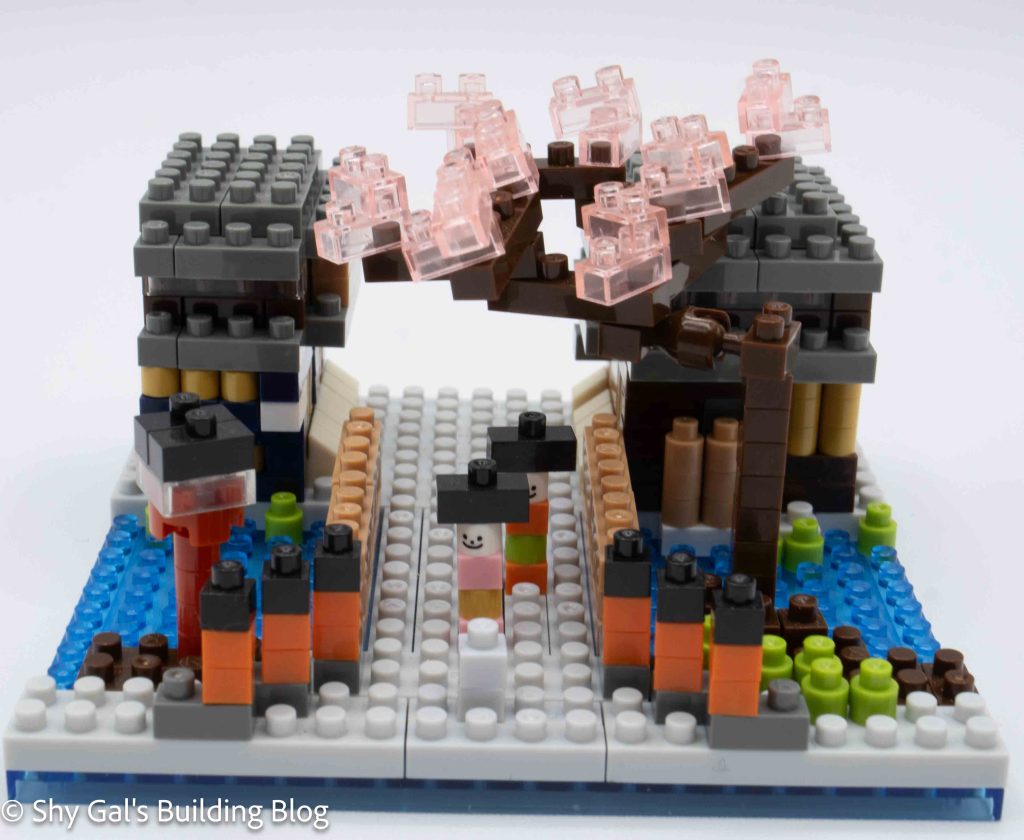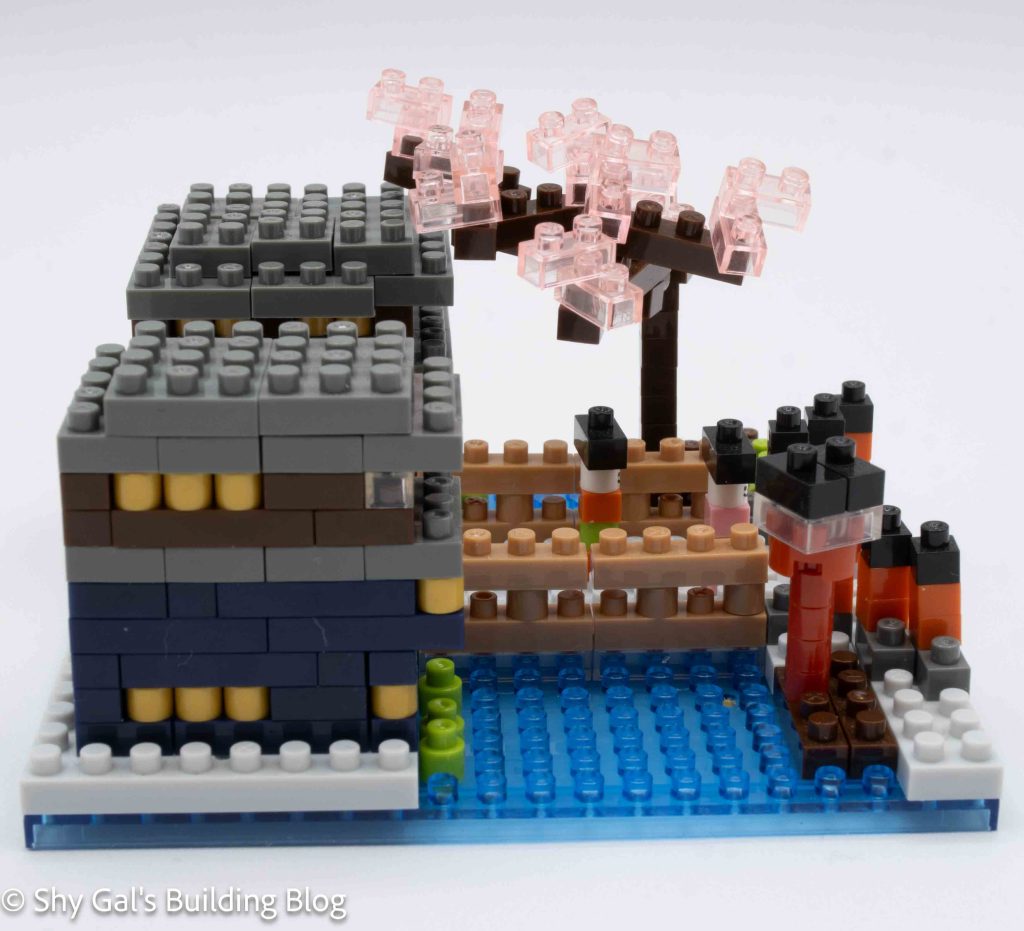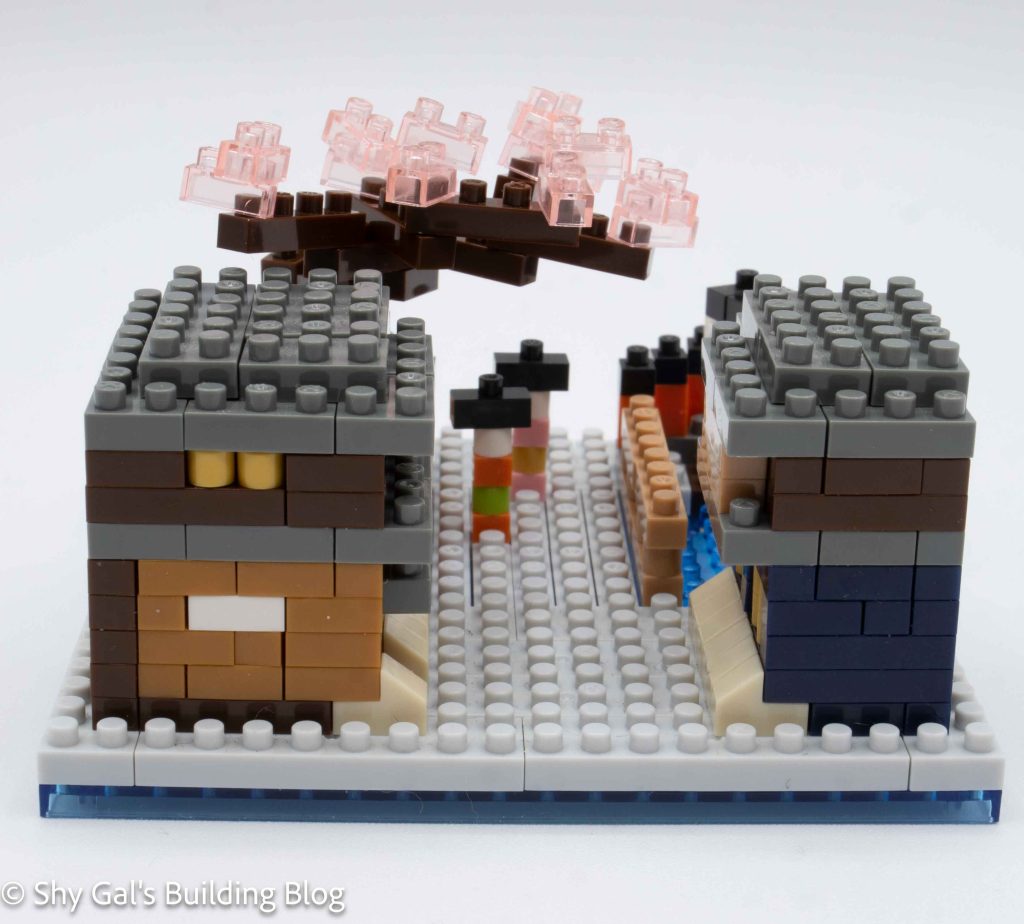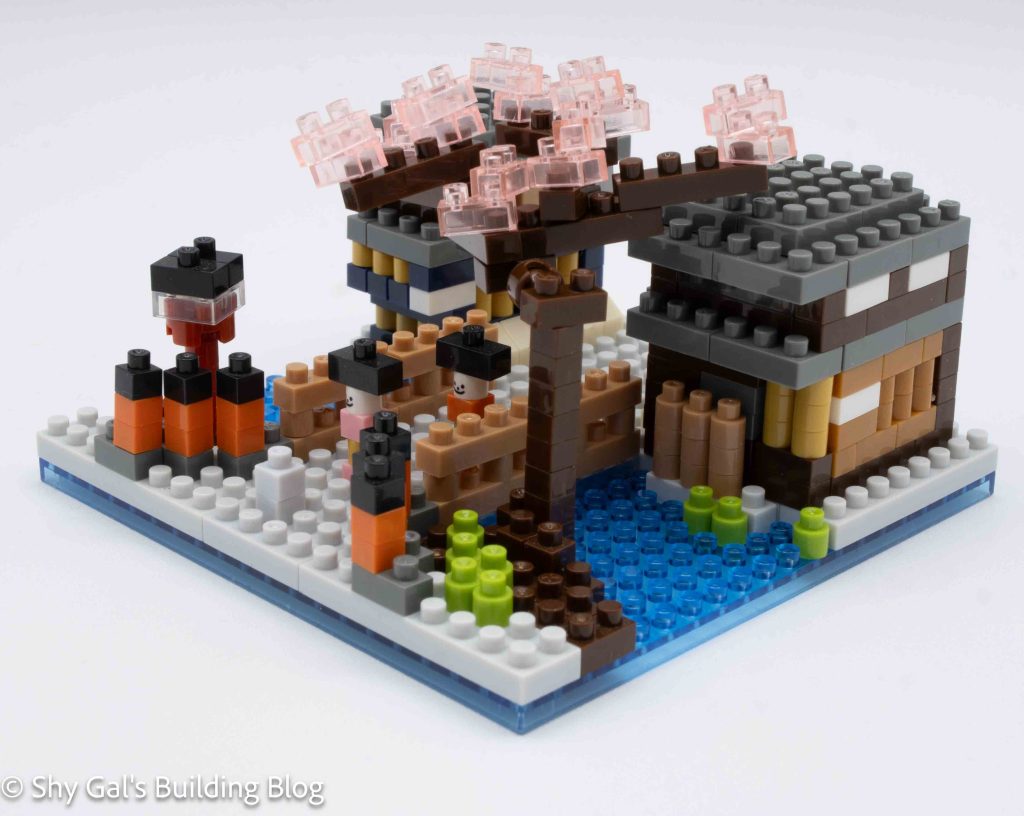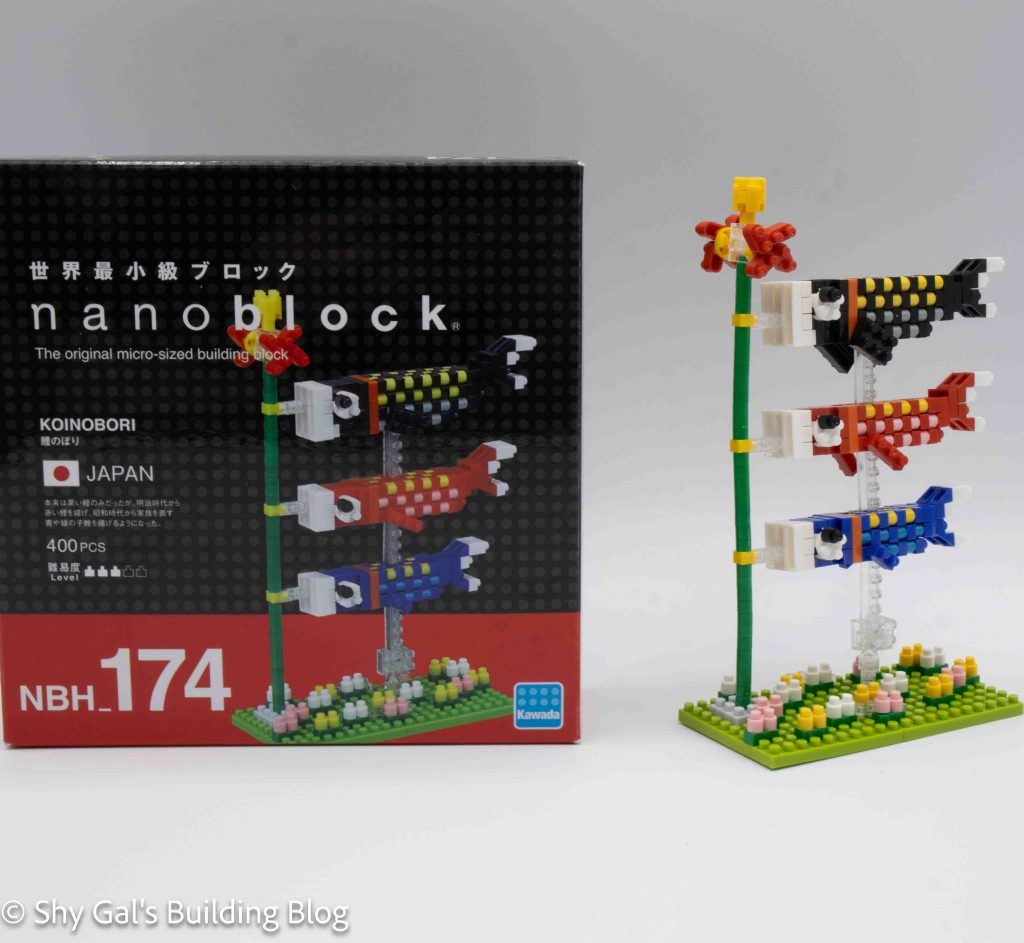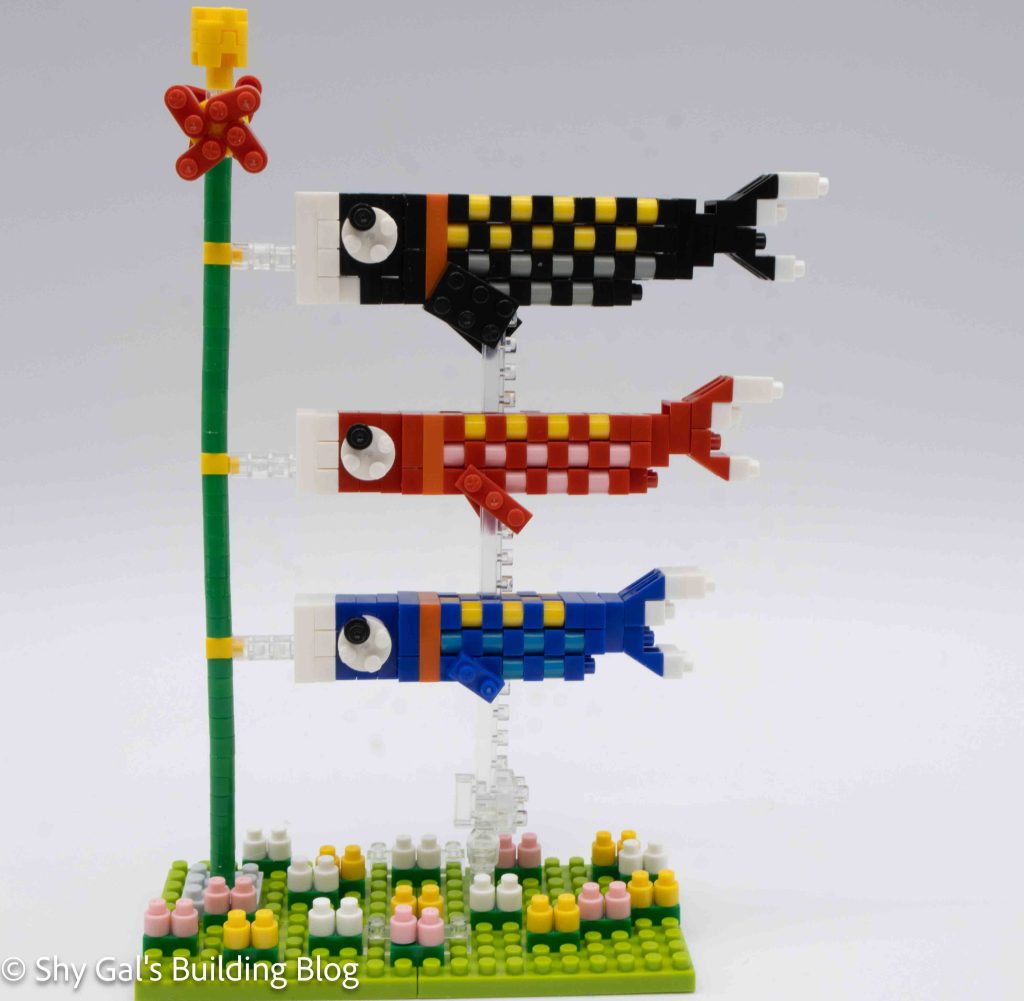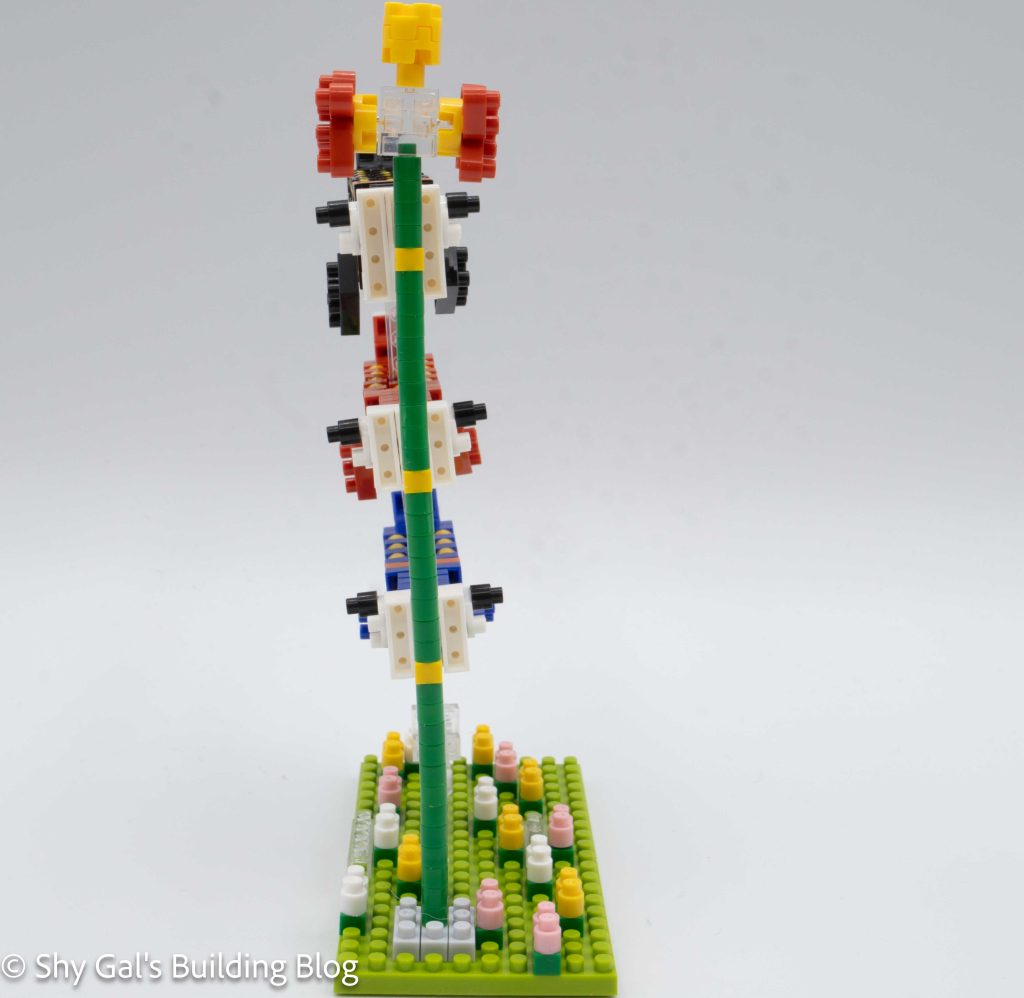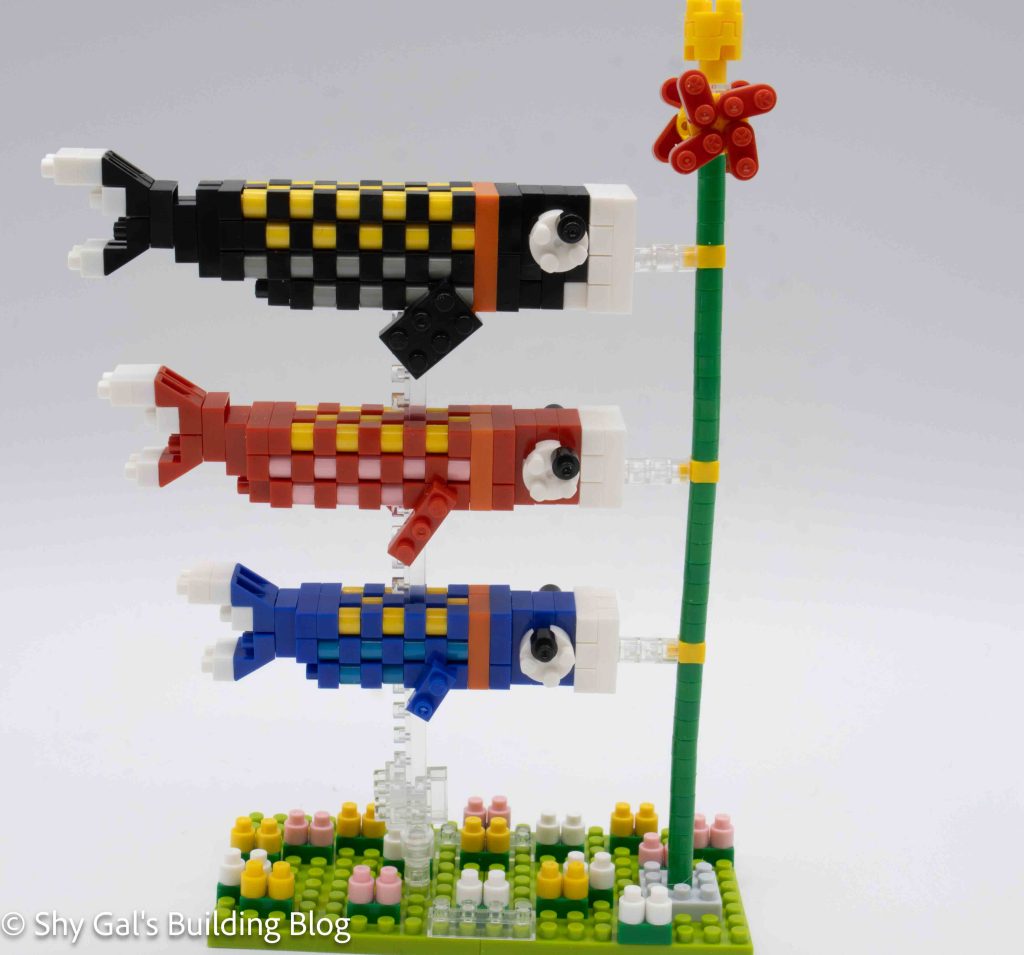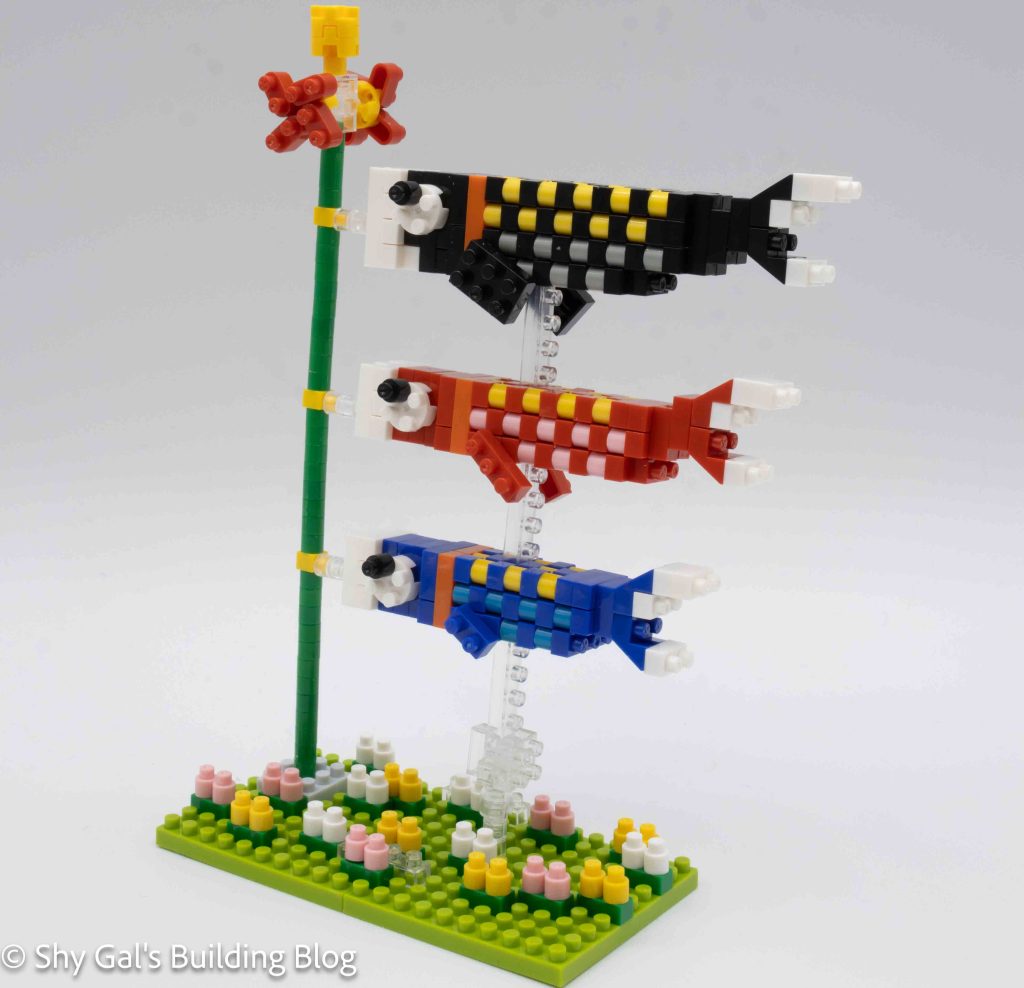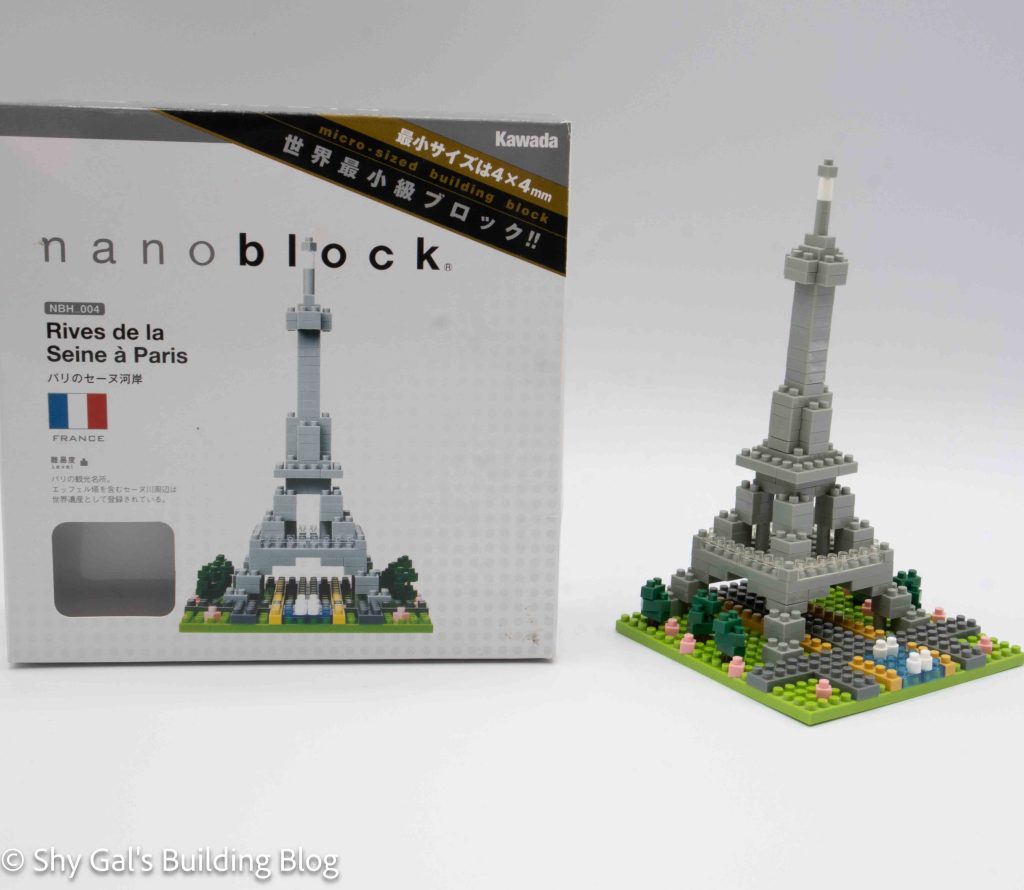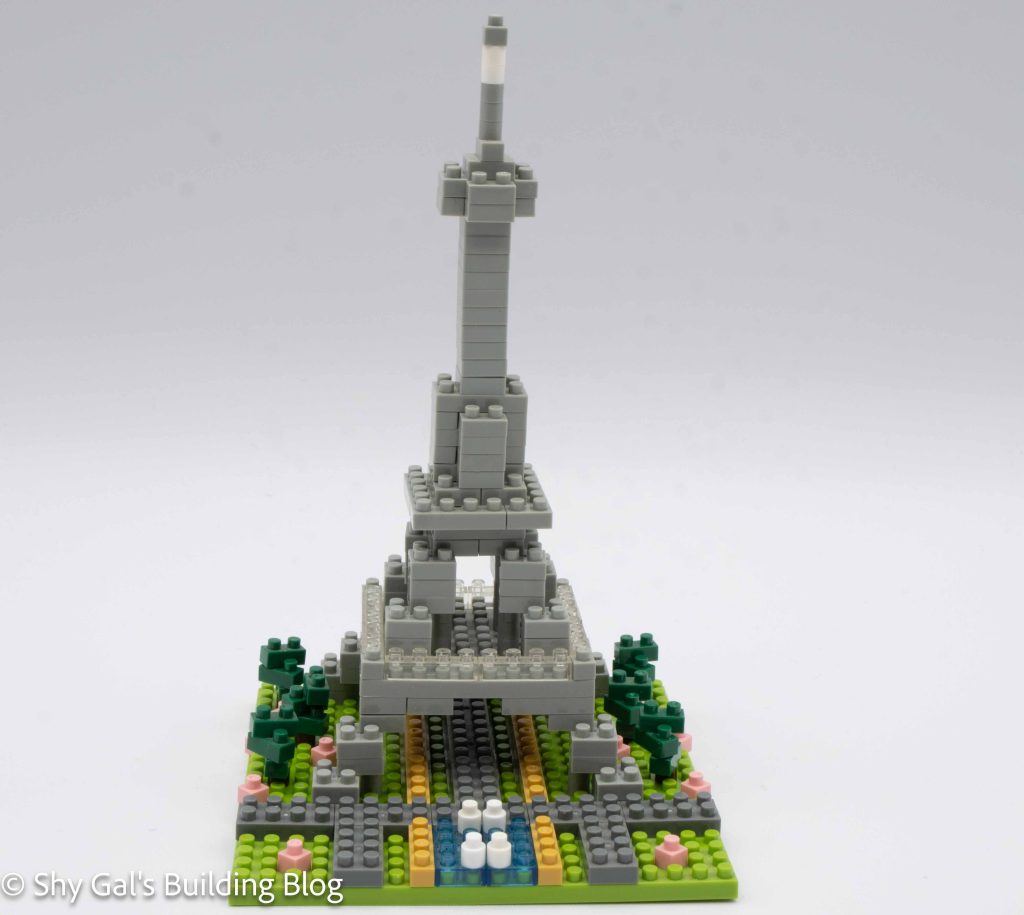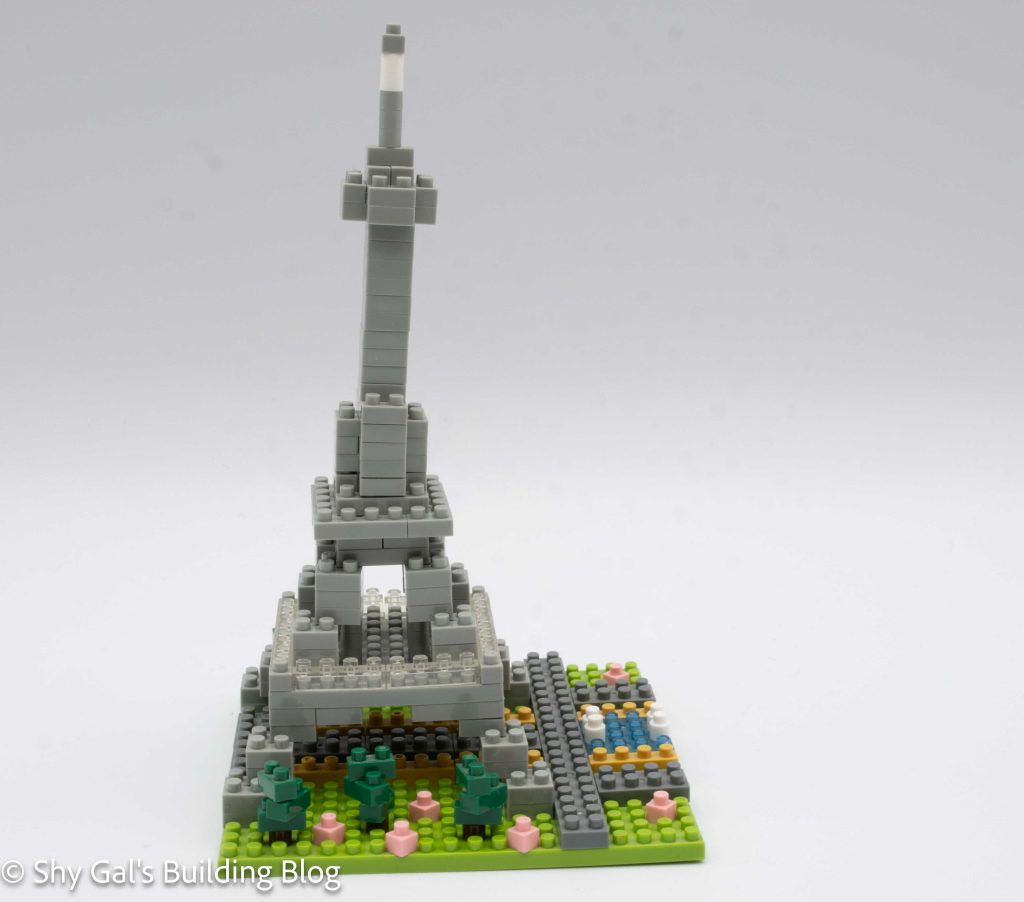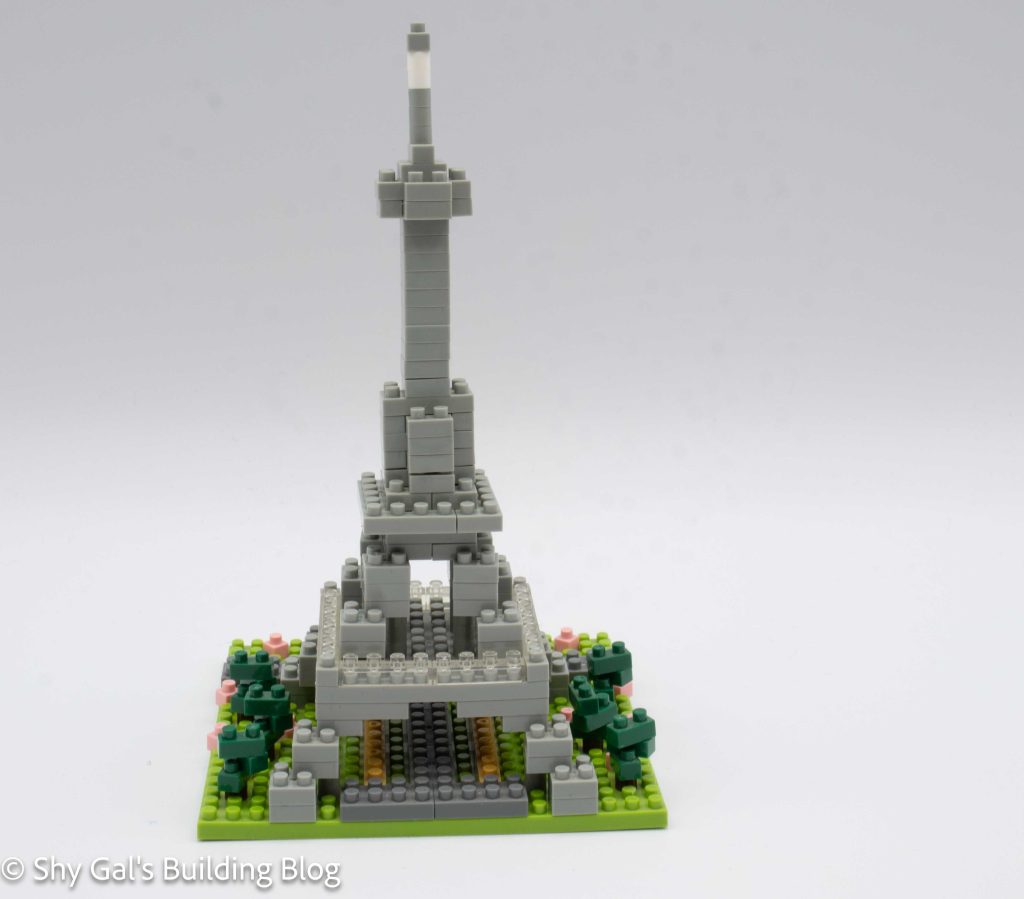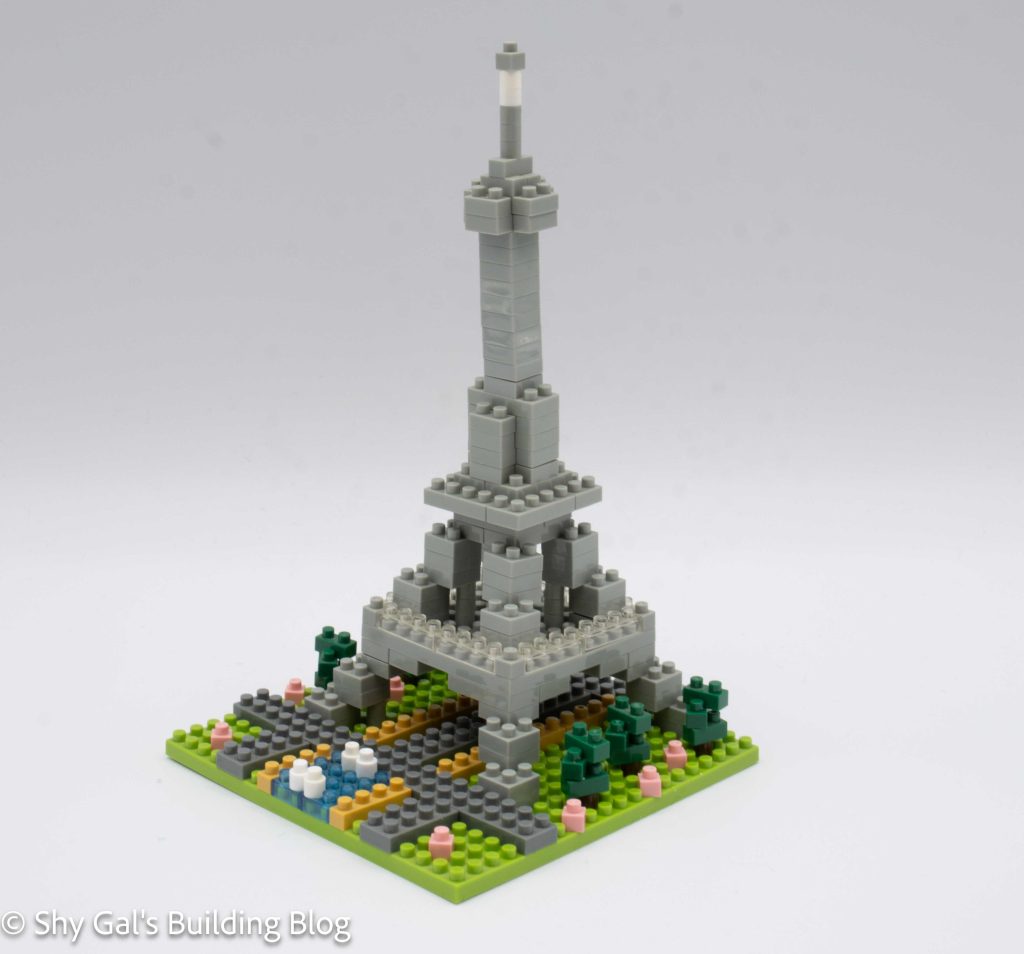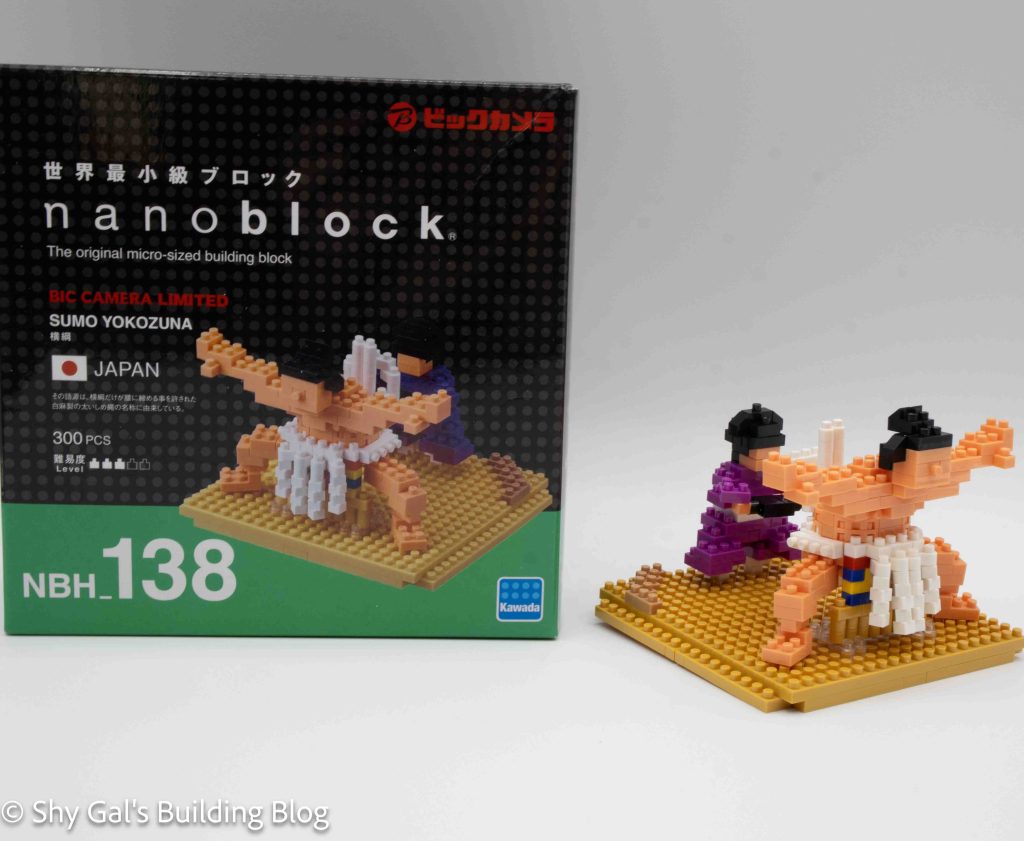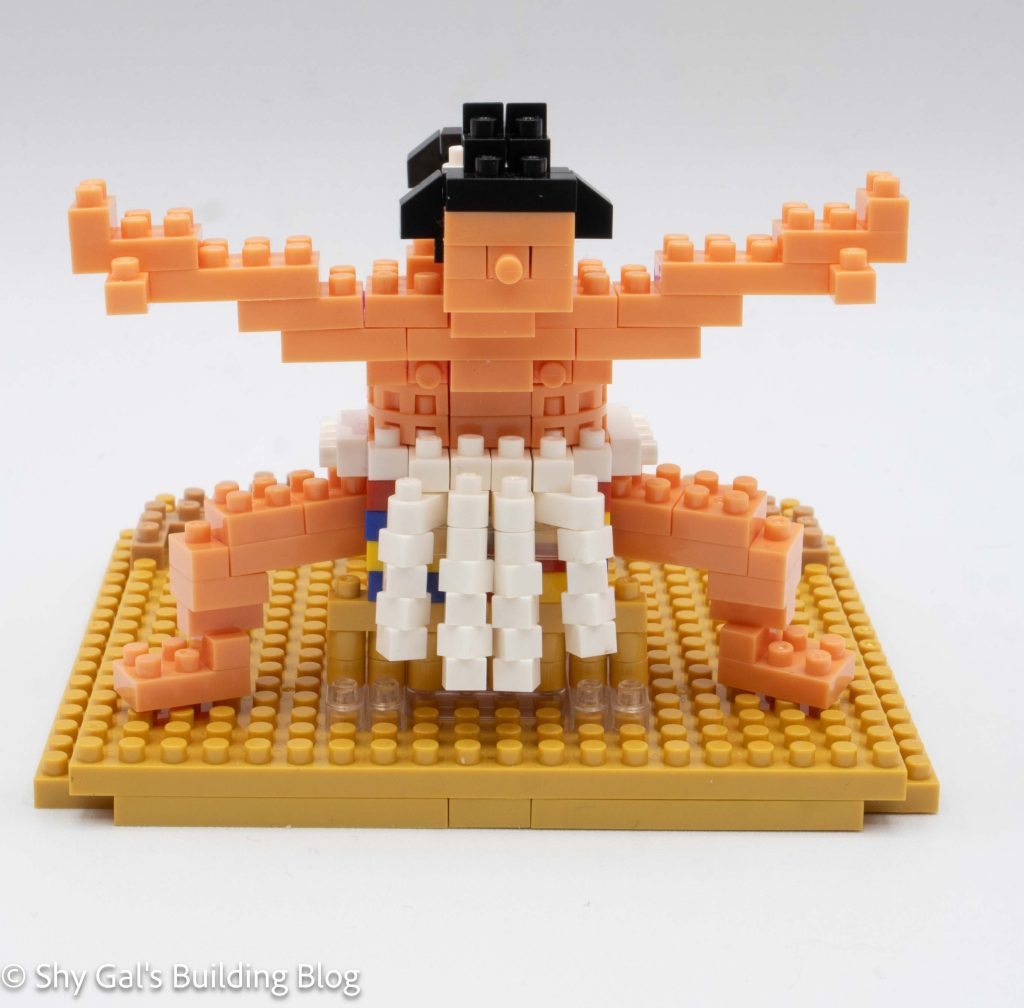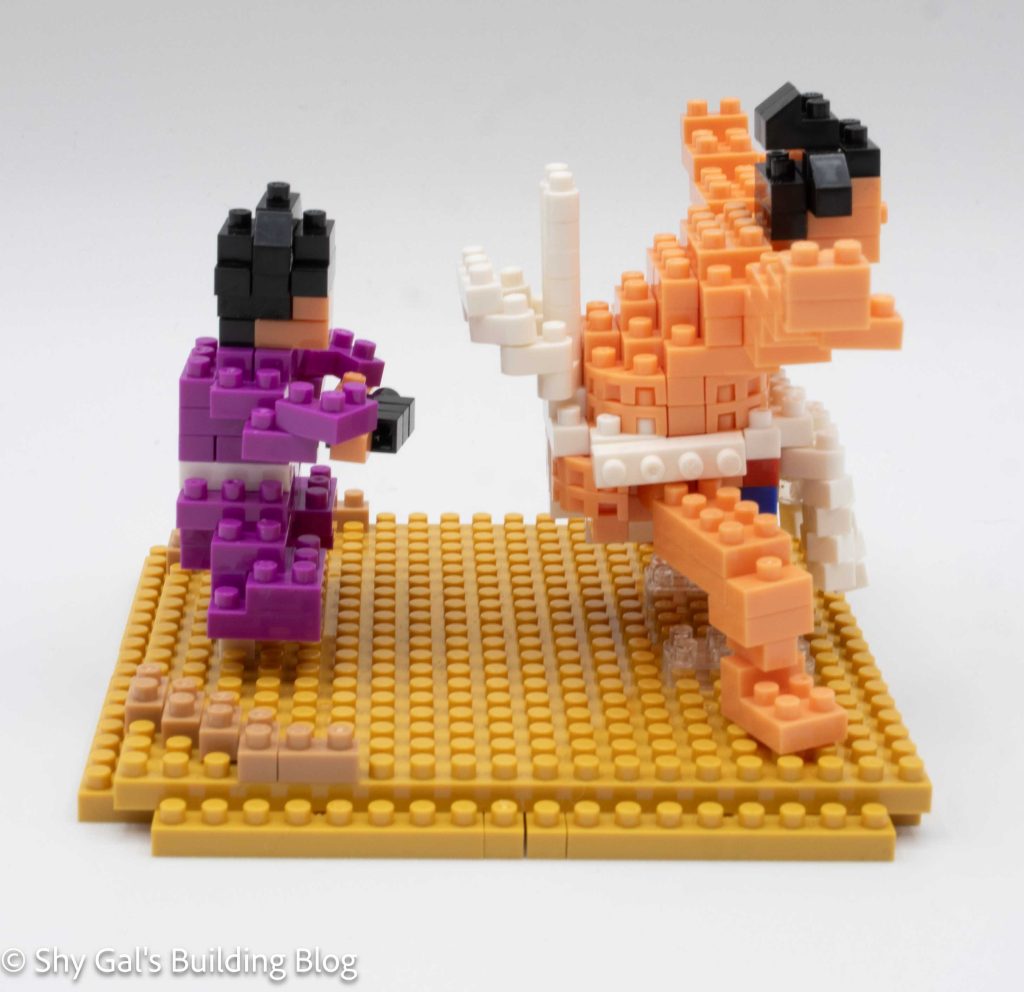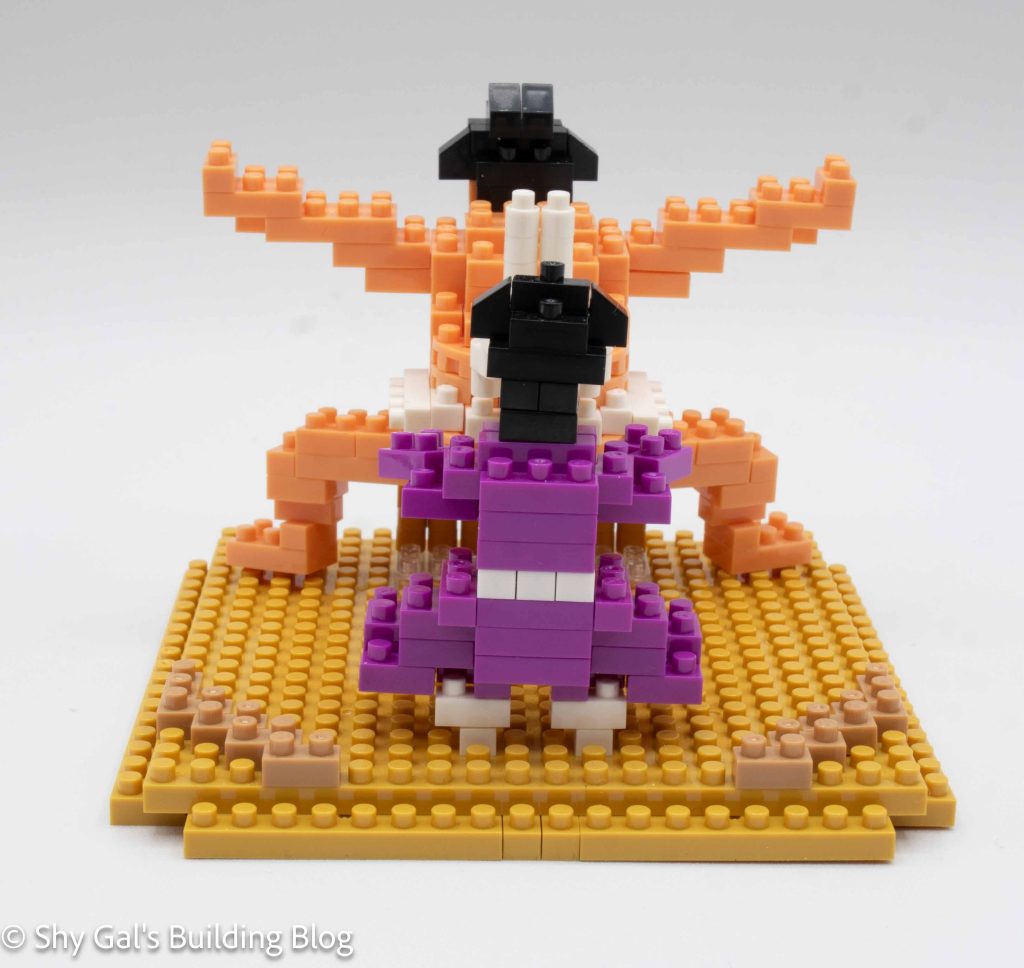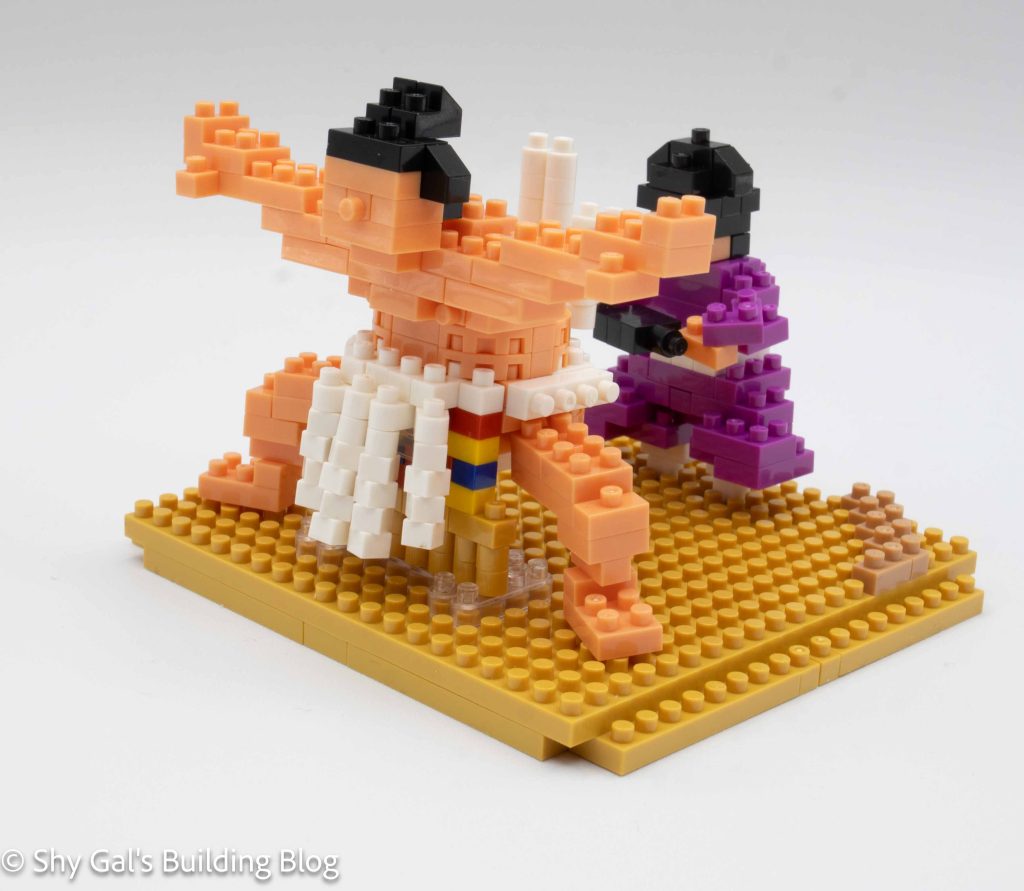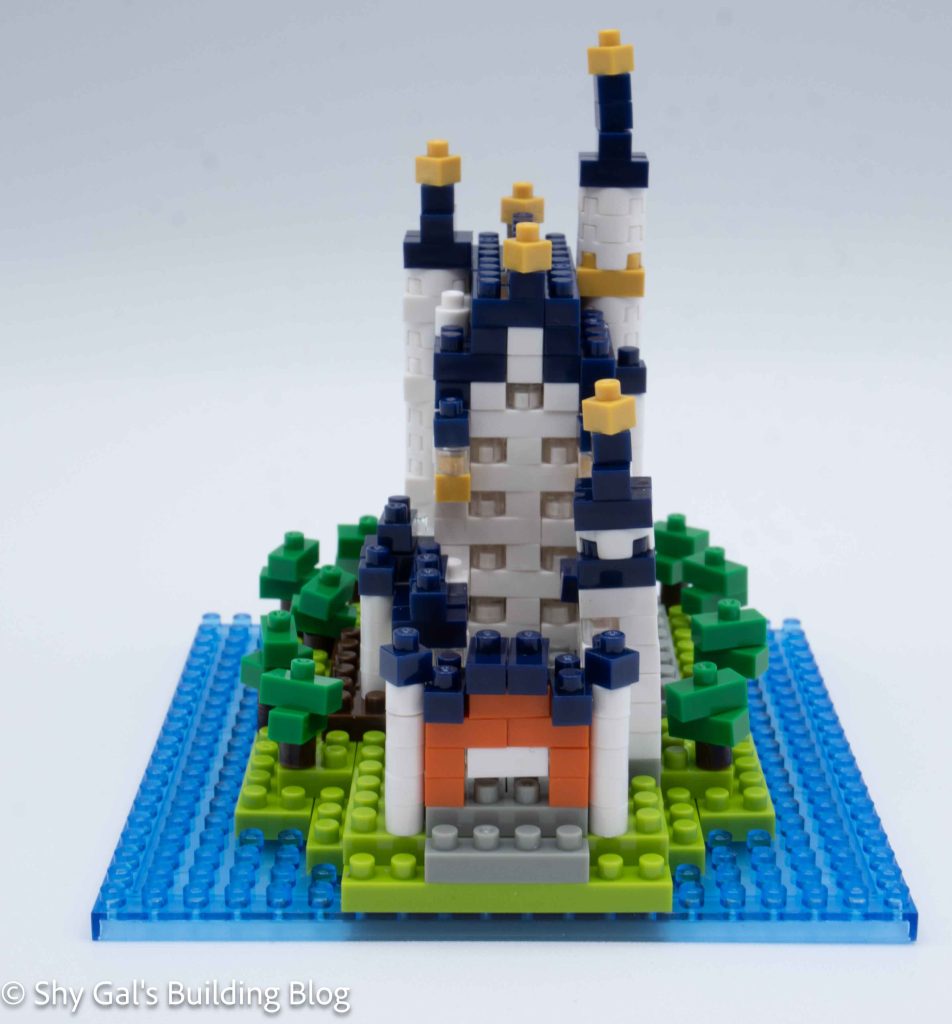
This post is a review of the nanoblock Schloss Neuschwanstein build. Schloss Neuschwanstein is part of the nanoblock Sights to See collection. Wondering what else is part of the Sights to See collection? Click here for a list.
Number: NBH_106
Country: Germany
Difficulty Rating: 2/5
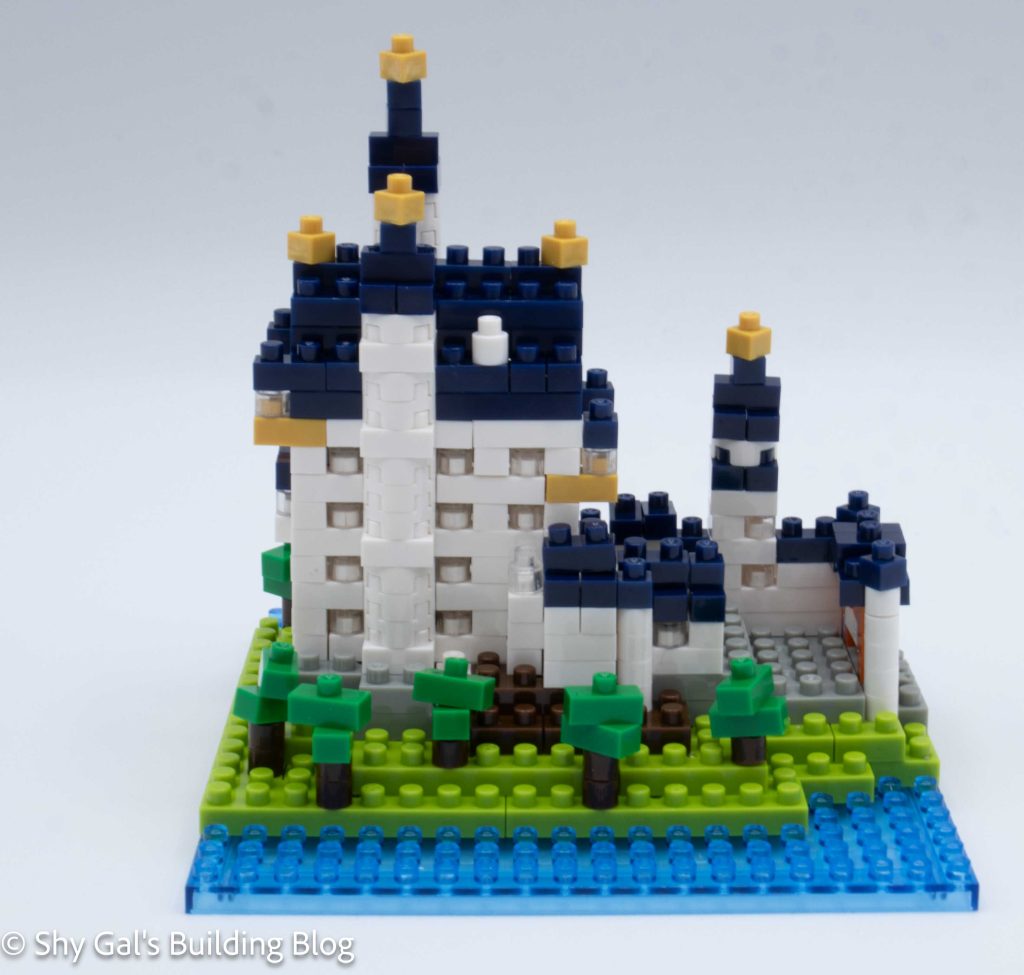
This is an update of Schloss Neuschwanstein NBH_010. It includes newer bricks such as round 2×2 and a clear blue base.
This build could be lit using one of the LED base plates because it is on a clear blue base. If it was on an LED base, all the windows in the castle would light up.
The build begins by laying the green base layer out on the 20×20 base plate. A bit of the center section remains uncovered which is why I think that putting it on the LED baseplate would light the windows. There are a couple layers of green grass to represent the hill the castle is on. Then, there are a couple of layers of grey castle foundation.
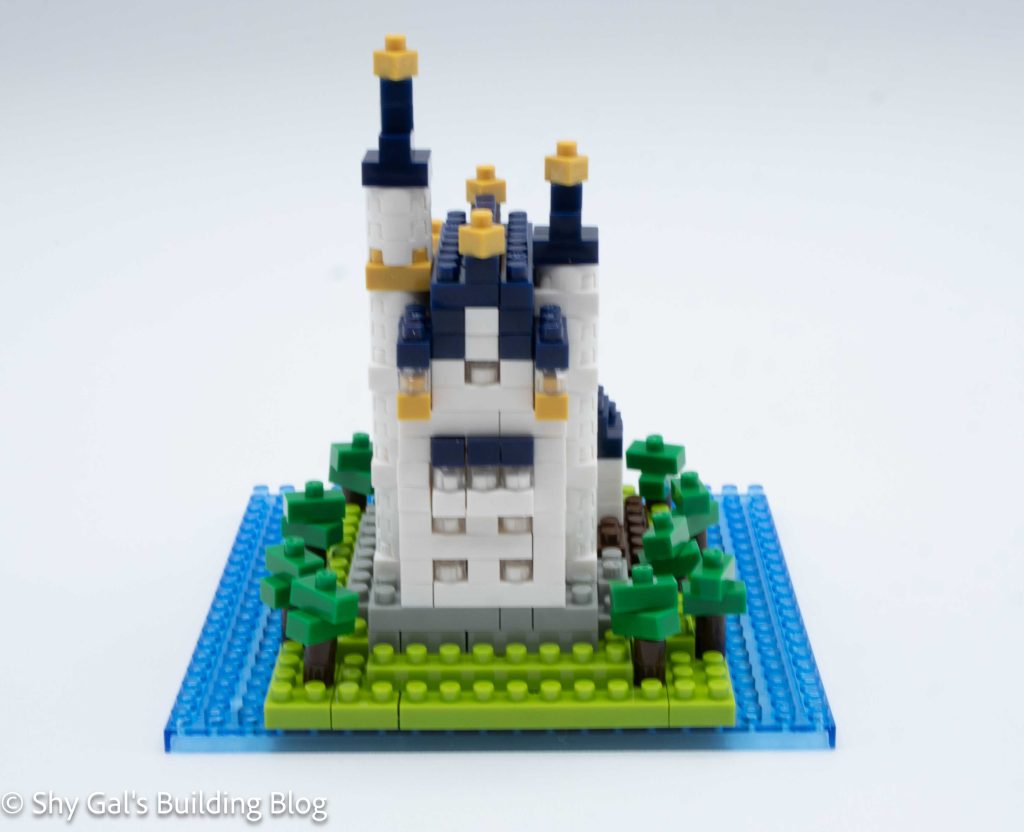
While I was building the actual castle, I needed to be careful to check each instruction for when there were additional bricks scattered around that build that needed to be added. Sometimes, I missed the bricks and needed to go back and add them in when I noticed.
Then, I began adding the layers of the actual castle. In general, there are 2 kinds of layers. 1 layer is solid white, and the other alternates between white and clear bricks. Each layer is very clear and straightforward. I just needed to be careful to not lose my place while going between the directions and the build.
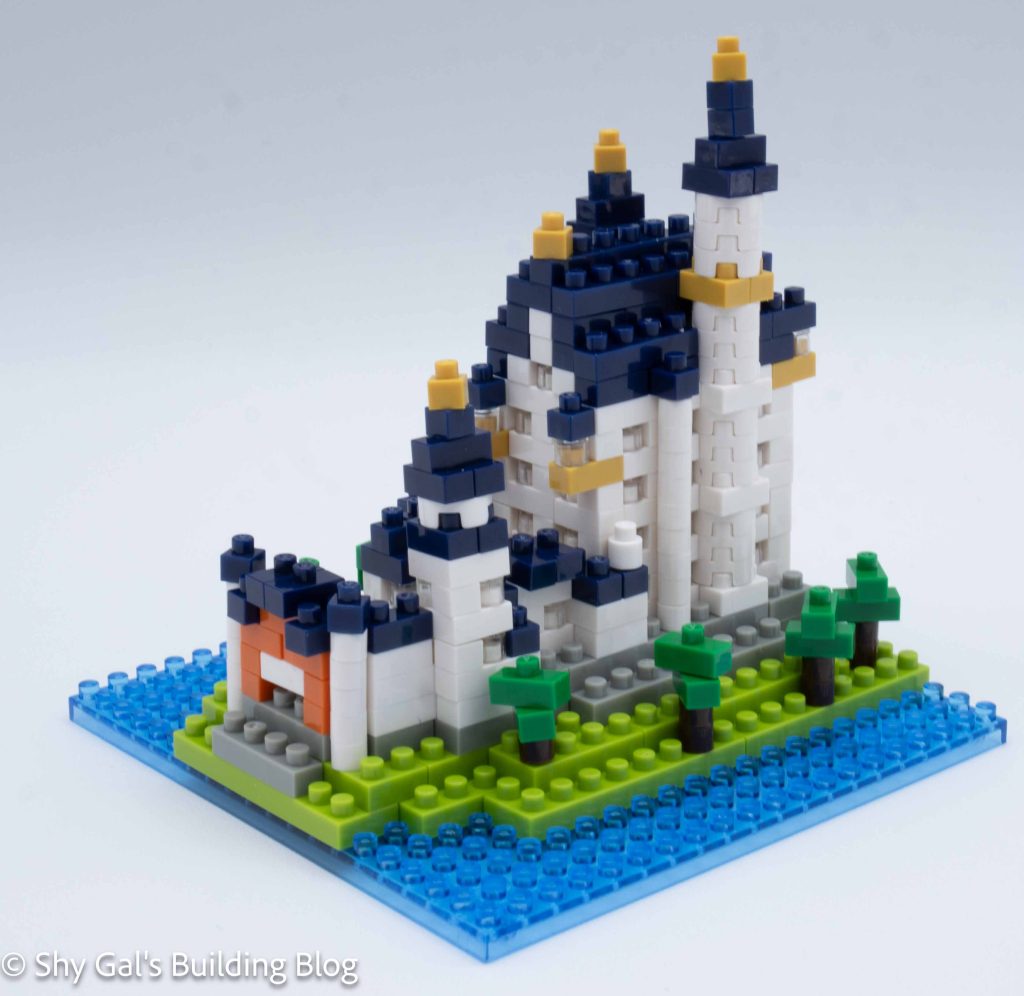
After several layers to create the walls of the castle it is time to add the roof. The roof is navy blue with gold details. White is also added to finish the main body of the castle.
After the roof is added, the final details are added to the towers on the side of the castle. The towers start at the beginning of the build and rise until they are the highest point in the building.
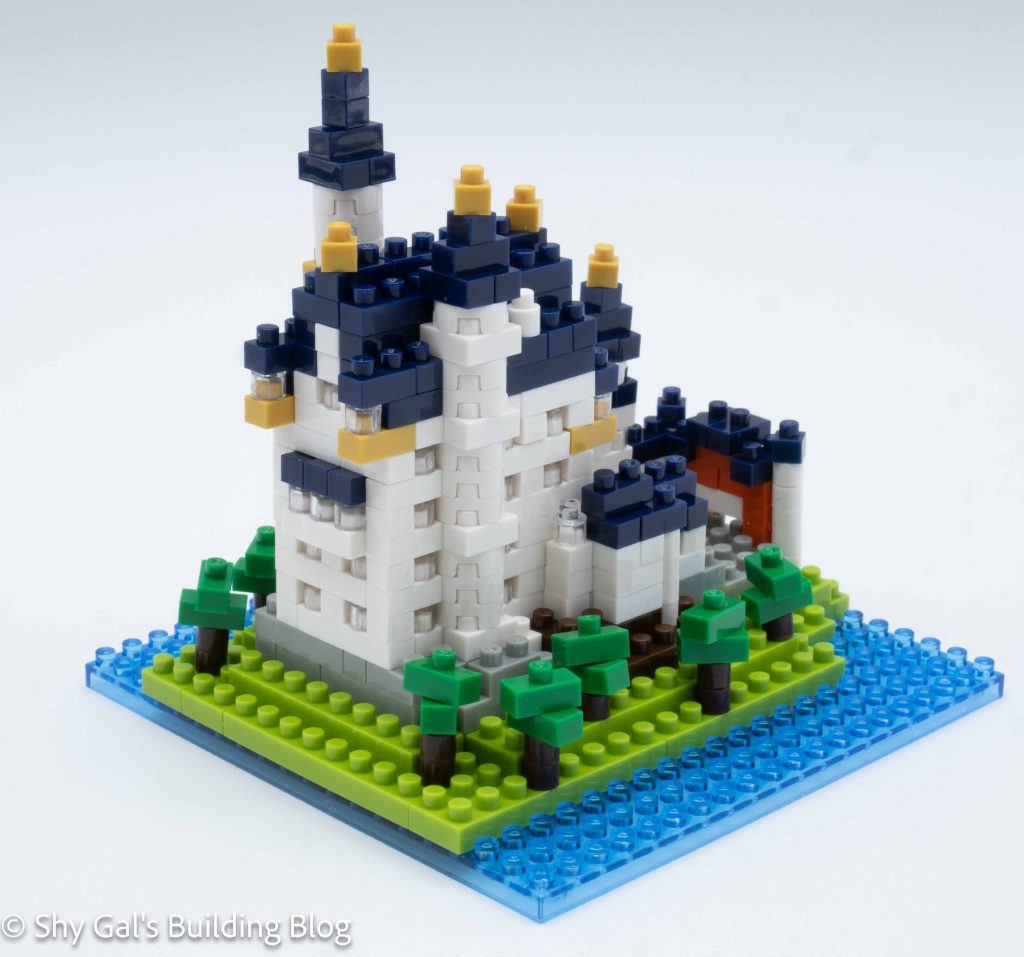
Things I liked:
- I like the update. I feel that the towers are a lot more stable and clear than the original version
Things I didn’t like:
- I don’t like how the instructions kept cutting more out of the picture. It made it hard to see when to add bricks around the outside
